Prior to 11C
80% of Lithuania’s territory belongs to the ancient woods. Due to its geographical location, the country is dominated by broadleaf and mixed forests.
Lithuania — where nature belongs to itself, and is allowed to develop without any human influence.
Ural owls are typical old forest residents. Researchers claim that there are only eighty to hundred breeding pairs left in Lithuania, due to an intense deforestation, imposed by people. The latter presents one of the greatest threats to these sedentary night travelers, choosing to settle inside the hollows of old-growth trees.
The exotic western capercaillie, once an ordinary inhabitant of Lithuanian pine forests, and now — a rarely seen feathered dweller. The drastic decrease in the number of capercaillies in Lithuania was caused by a gradual destruction of the territories it inhabits. Famous for their wedding ritual, capercaillies gather in the same areas called wedding venues, year after year to seduce females and mate. If the ritual territory isn’t destroyed, it’s used by capercaillies for decades.
Grey-headed woodpeckers are known as one of the most colorful forest birds. Like many other members of the genetic bird family, it needs mature masses of trees, rich in dead wood. It especially likes thick snags, of which there are hardly any left in Lithuania. As grey-headed woodpeckers tend to forge new hollows every year, its apartments remain for other forest animals, such as sparrow owls, bats and dormice.
One of the most mysterious inhabitants of the ancient woods is the secretive black stork. There are just over 500 pairs in Lithuanian forests, which makes around 10% of the entire European population. Even so, it has declined by as much as 30% over the past two decades, and the number one cause of extinction is a shortage of old-growth deciduous trees.
Coral tooth fungus mostly grows in moist forests, on old veteran trees or coarse woody debris. These elegant forest dwellers allow you to enjoy its ephemeral beauty for only one season, if it shows up at all. In Lithuania, you can find it in just twenty places. The number is caused due to a removal of large, coarse woody debris from old-growth and mixed forests, which are necessary for the survival of these fungi.
Tree lungwort is one of the largest and probably one of the most impressive lichens in Lithuania. Although still found in relatively many places, its population is rapidly declining. Genuine shrubs of this luxurious lichen can only be found in small fragments of Lithuanian ancient forests, untouched by human activity for a long time.
Orange polypore is a bright, yellowish-pink sponge mushroom, found on old large oaks. Although it’s often confused with a common edible mushroom - chicken of the woods, it’s considered a rare species, that grows only in about thirty places. These spectacular mushrooms flourish on old-growth or recently fallen oaks in ancient forests and its fragments.
Lynx, like all members of the cat family, has the ability to run extremely fast, though only for short distances. In order for them to survive, old, dense forests with numerous wind fallen trees are a must. Only in such forests can they sneak behind their victims and create lairs, suitable for giving birth to kittens. Lynxes have been included in the Red Data Book of Lithuania since 1979, with the current population of these elegant predators reaching a mere number of hundred individuals.

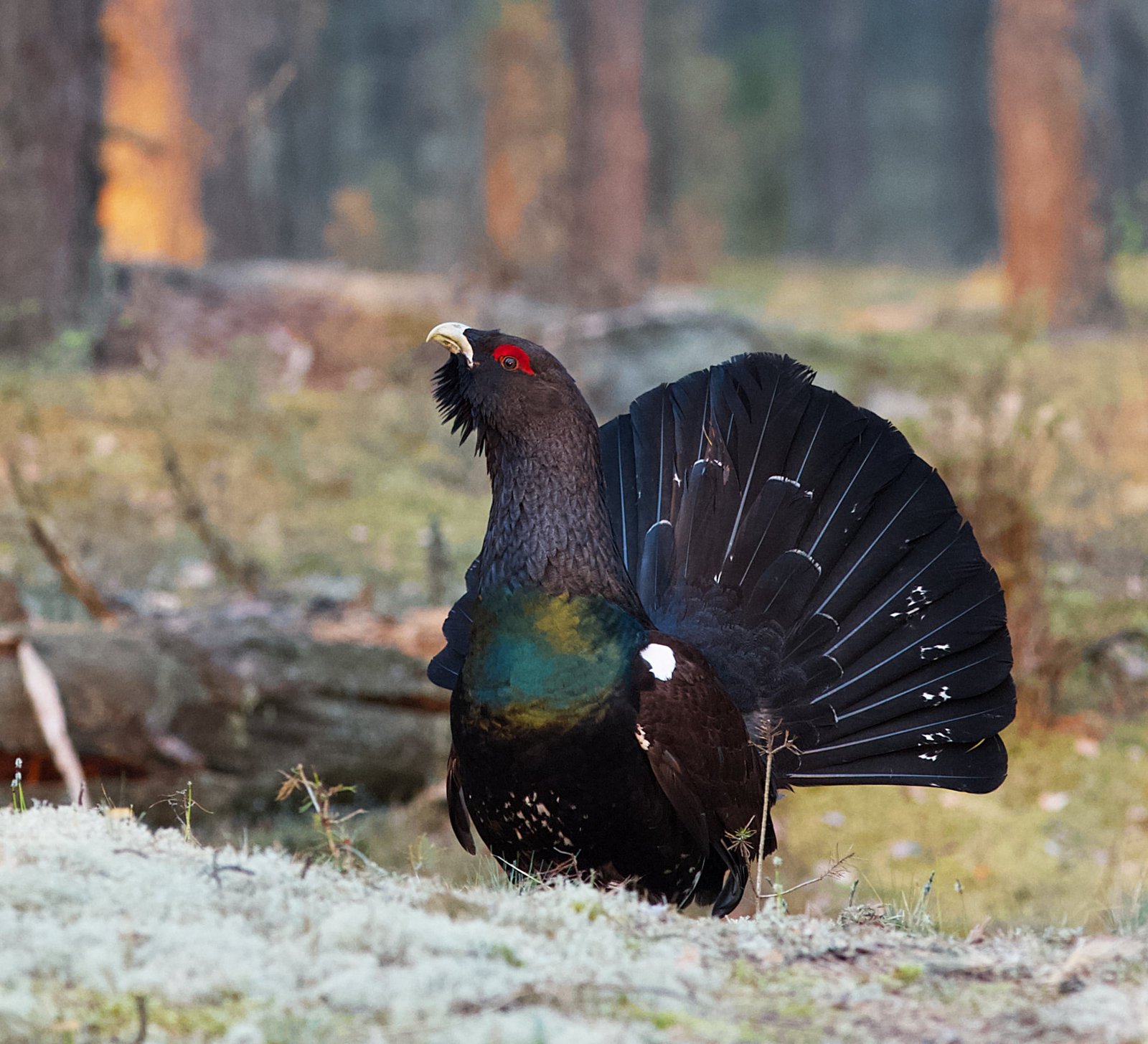
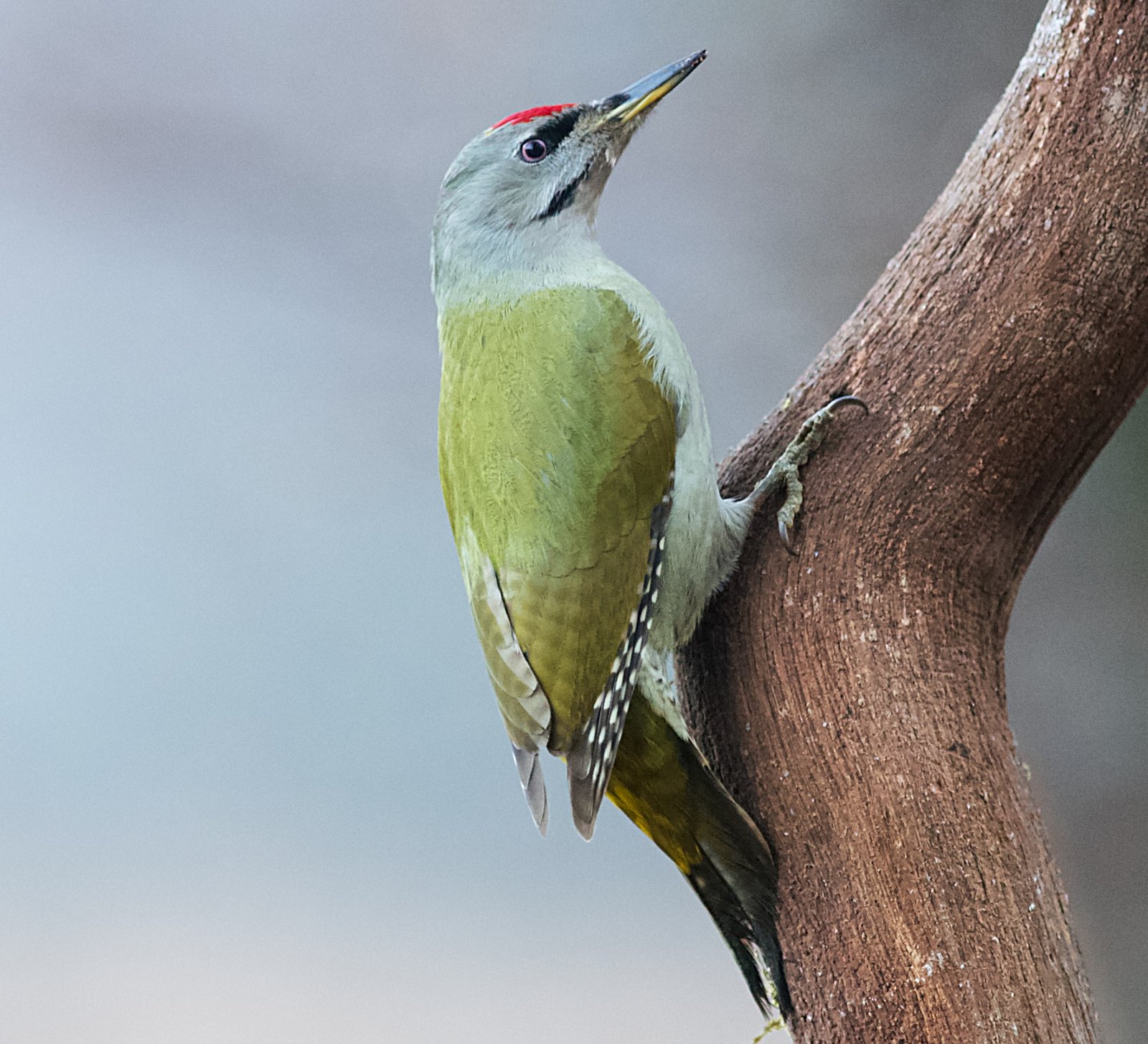
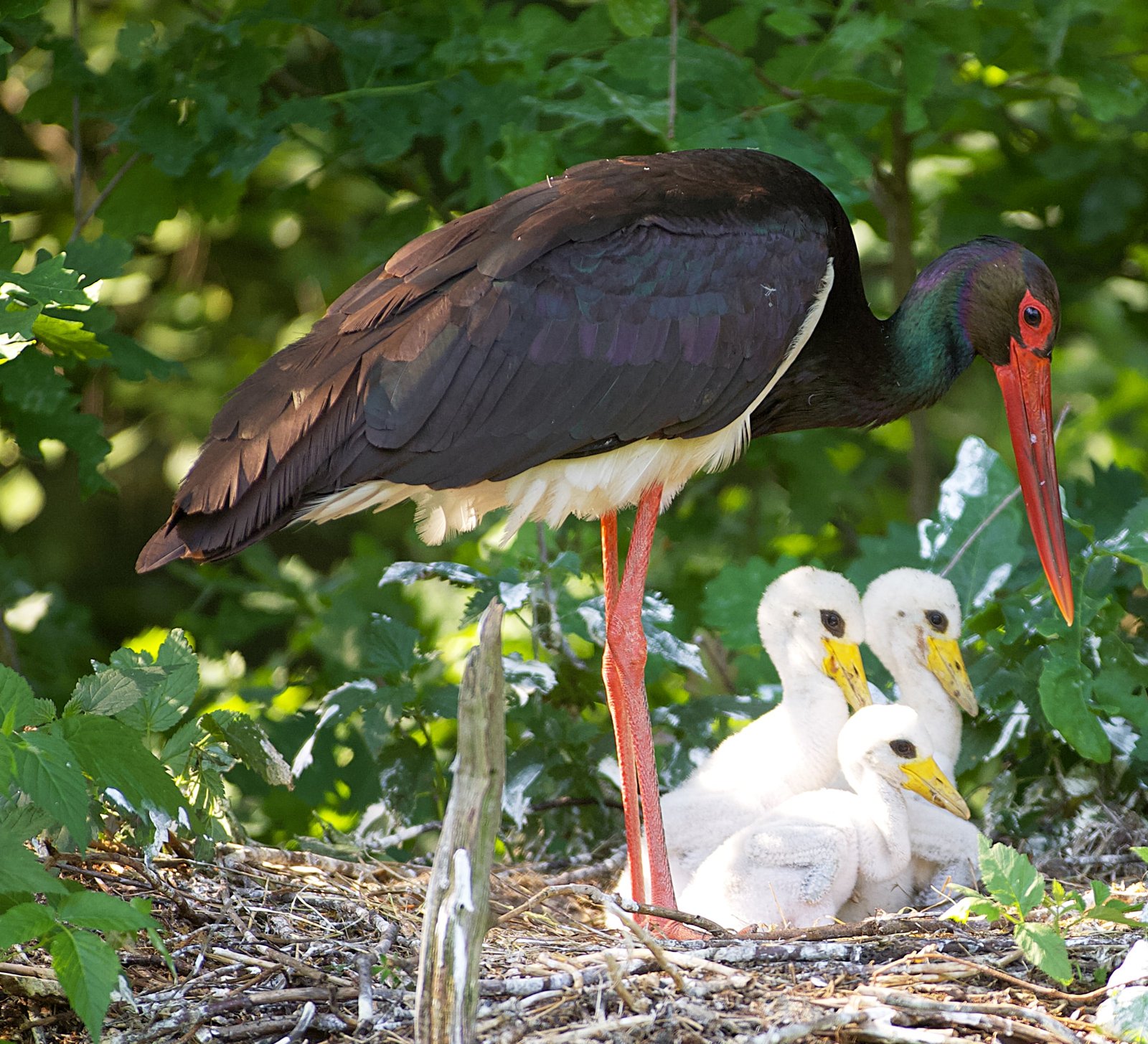

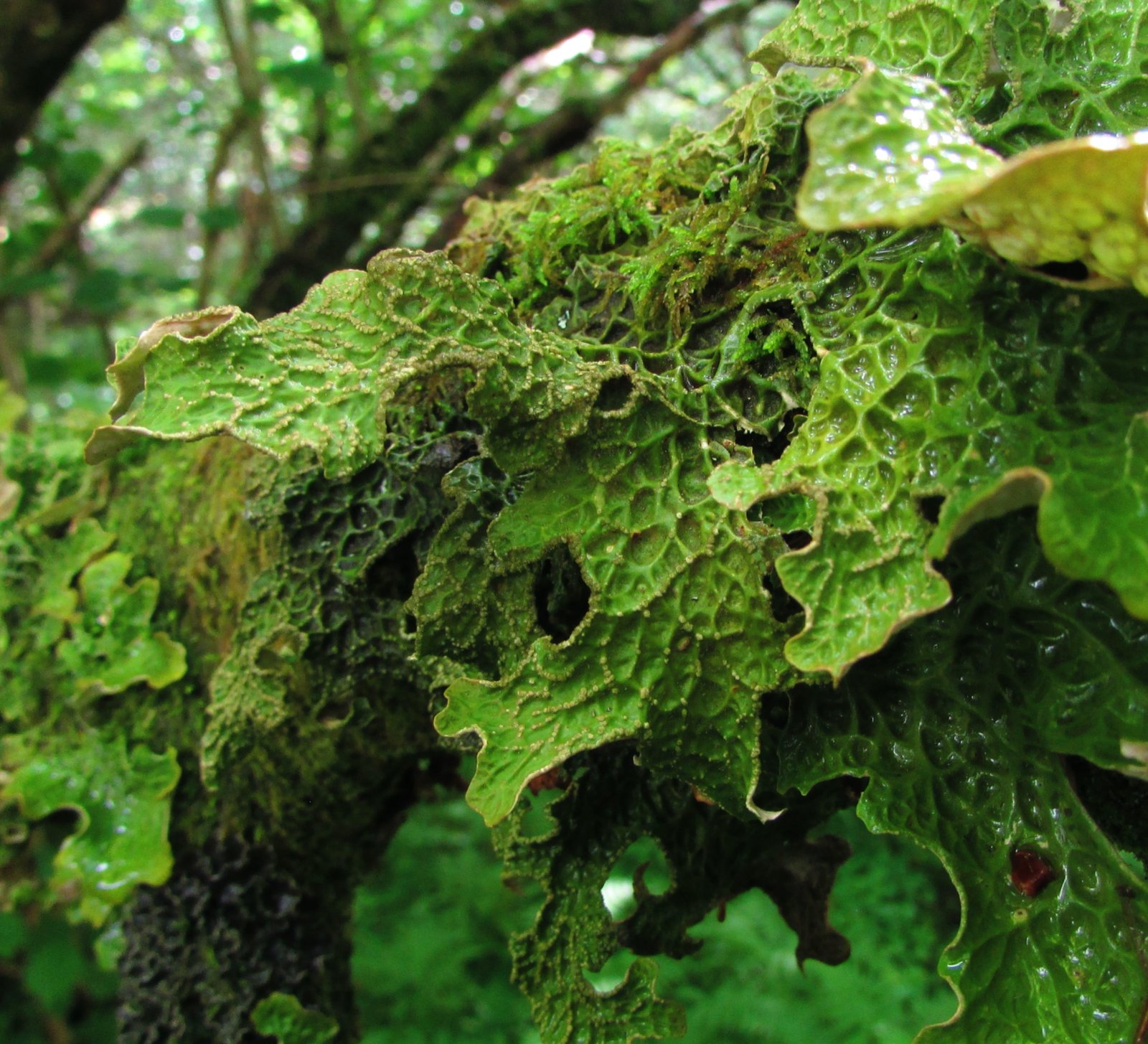



80% of Lithuania’s territory belongs to the ancient woods. Due to its geographical location, the country is dominated by broadleaf and mixed forests.
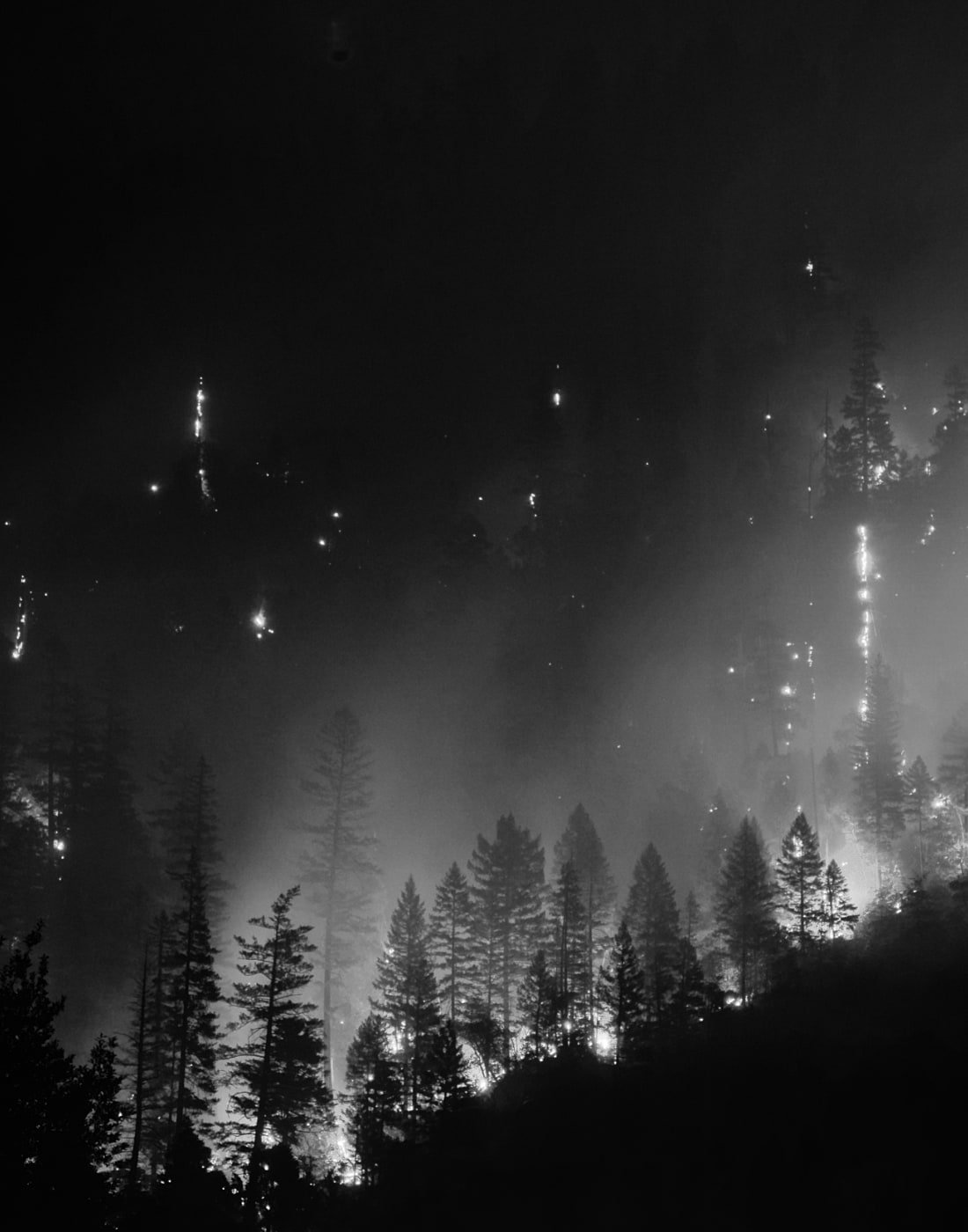
Slash and burn agriculture is widespread in Lithuania, during which the forest is burned and various cultivated crops are grown in its place.
Such farming methods are actively practiced for about seven hundred years, during which Lithuanian forests are reduced by almost half — up to 55%.
Nevertheless, Lithuanian forests still cover about two thirds of its territory.

Country's forests are increasingly used for industrial purposes. One of them is the transport of timber to the West for shipbuilding. Given that roads and railways are still lacking in many wooded areas, timber is transported by simply letting rafts flow downstream in watery rivers.
It’s believed that one of these water transport routes also continued across the river Žeimena. There underwater archaeologists discovered as many as 20 metal axes, which were made between the 15th and 18th centuries and are thought of as being used for cutting down oaks, growing nearby.
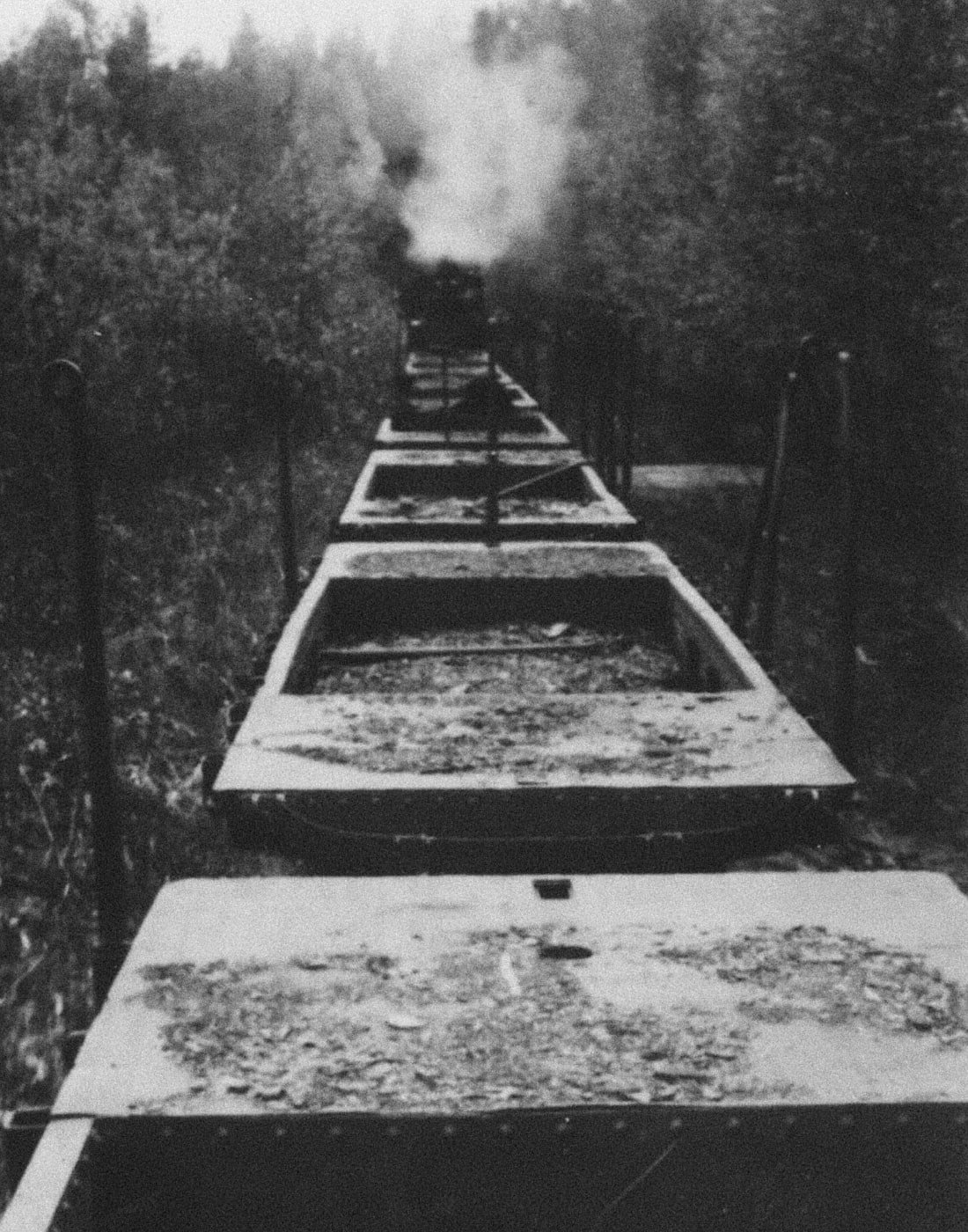
Industrial felling continues to intensify. With the development of industry in Central and Western Europe, there’s a shortage of wood. The latter begins to be shipped from the Eastern Europe.
In the second half of the 19th century, a construction of the St. Petersburg - Warsaw railway is built throughout Lithuania. An intensive trade in forest and timber begins.

The First World War led to an intensive deforestation, especially on the eastern outskirts of Lithuania, near the St. Petersburg - Warsaw railway.
In 1914 - 1916 a narrow-gauge railway was built for timber transportation to Marcinkoniai, through the depths of Dainava forest. The locals dubbed it the ‘French Road’ — due to Germans using French war prisoners to build it.
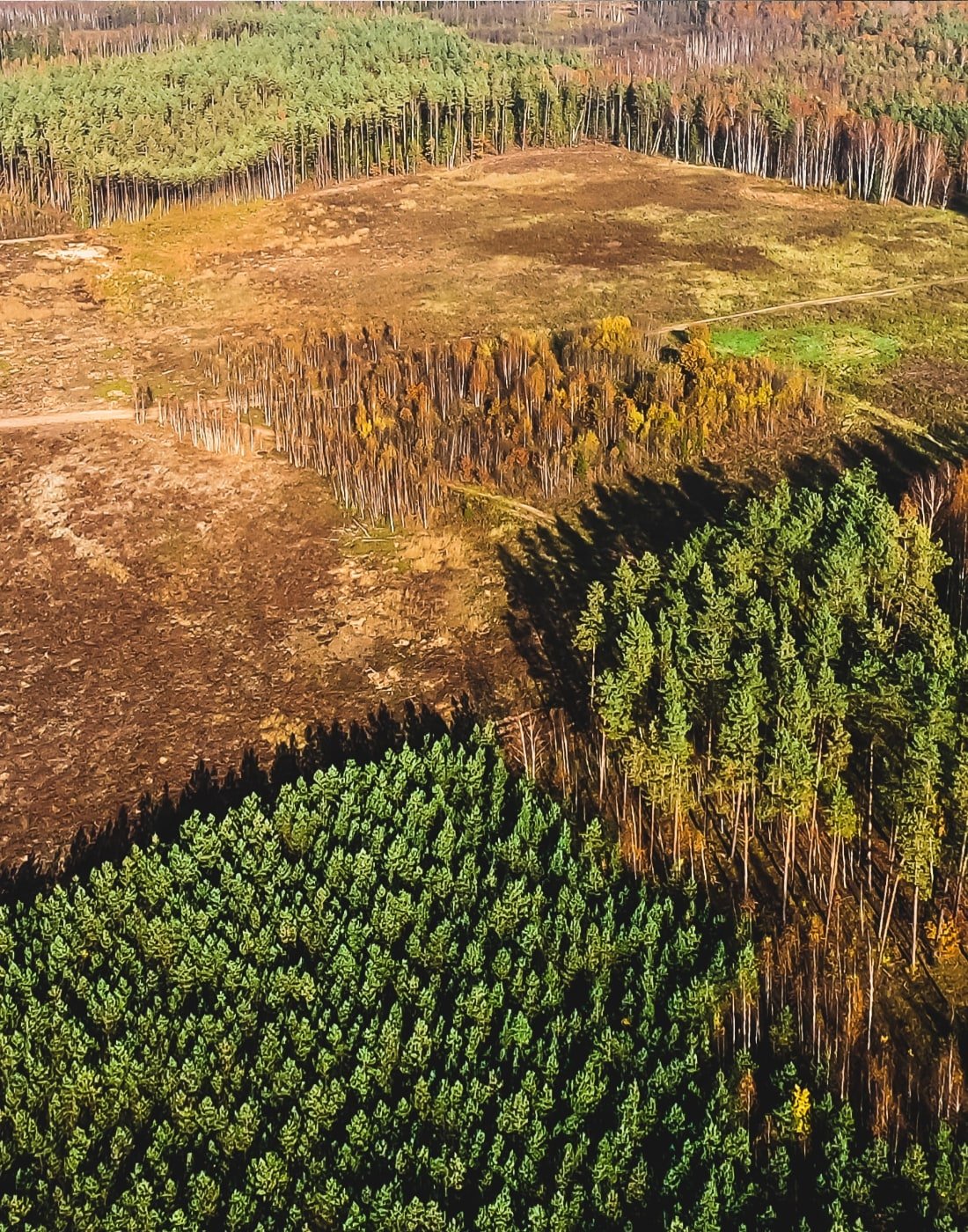
Strict nature reserves are the only areas in Lithuania, where forests have the potential to turn into ancient woods. As of now, they make up only 1.225% of Lithuanian forest territory.
Although the average age of the trees within can reach three hundred years, in Lithuanian reserves it only manages to get to the age of seventy five.
Nevertheless, it’s possible to find forest fragments with an average lifetime of almost two hundred years, yet they make up less than one percent — 0.0009% of Lithuania’s land.
Due to mass felling, many species that require constant, slow-changing conditions, found only in old forests, are rapidly declining. Around 80% of protected forest insect species are in great danger, due to the lack of dead wood, which also threatens many species of fungi that decompose it.
The remaining community of plants, animals and microbes depend on these two species, enabling an uninterrupted chain of life, with each link providing one another with food and housing.

Although the oldest and most valuable forests are situated in hard-to-reach places for loggers, it cannot be saved without human protection. It depends only on us — will future generations be able to see the ancient woods of Lithuania?

The idea of establishing a foundation to preserve the old-growth forests of Lithuania arose after seeing the public interest in the documentary "Ancient Woods". Director, Mindaugas Survila, set aside the money it made, 60 thousand euros, towards purchasing the first forest plots, positioned to become the first public, Lithuanian ancient forest.
Further activities of the foundation will be based on privately donated funds, dedicated to the acquisition of forest plots. In this way, forests will be protected from felling and the first ancient forest in Lithuania will be established.
The movie "The Ancient Woods" hits cinemas.
The Ancient Woods Foundation | „Sengirės fondas“ is established.
Prof. V. Smailys donates the first 1.5 ha forest plot in Kaunas district.
Rare globally endangered fungus discovered in the forest preserved.
The Foundation already protects 182 ha / 450 ac of forests with all life in them.
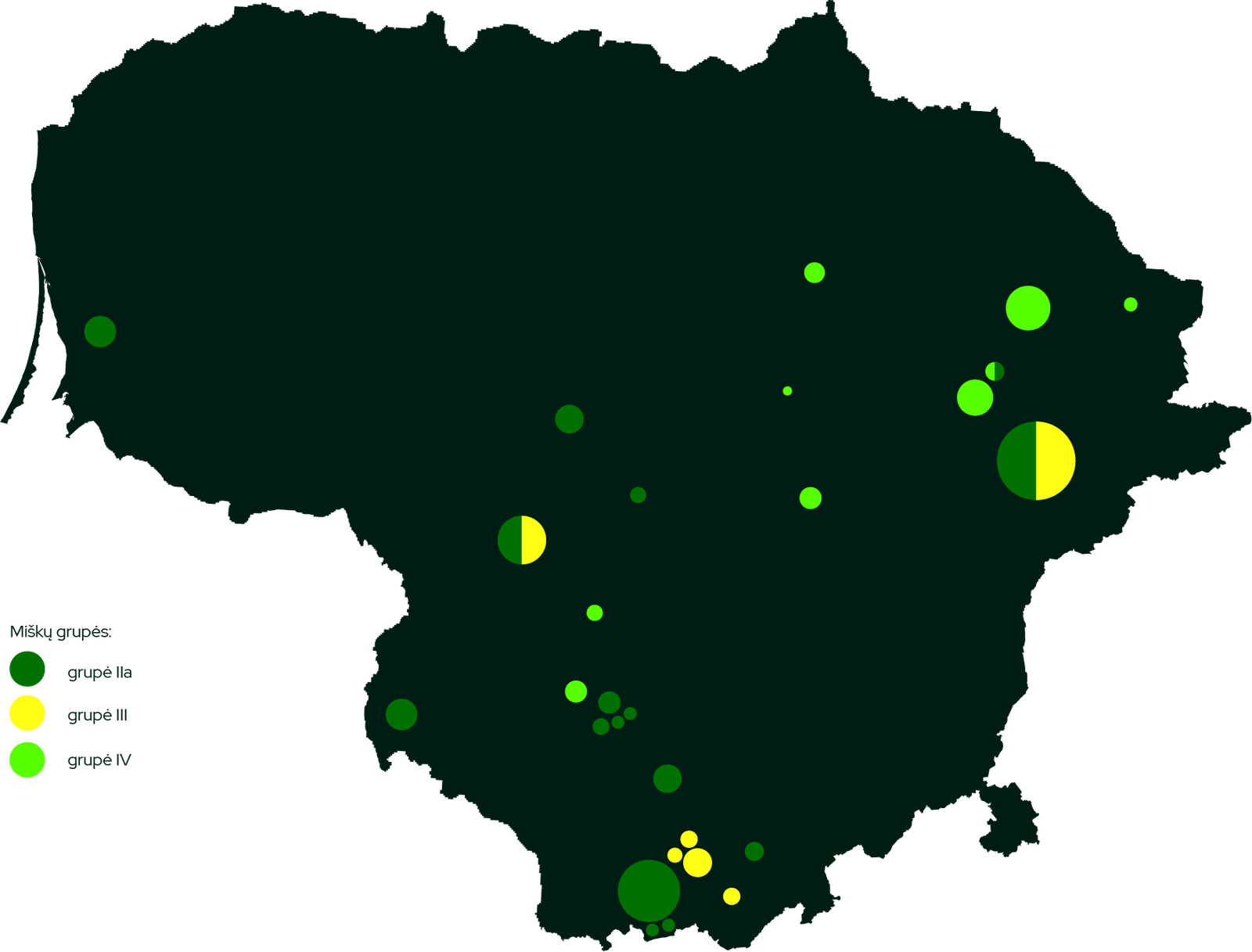
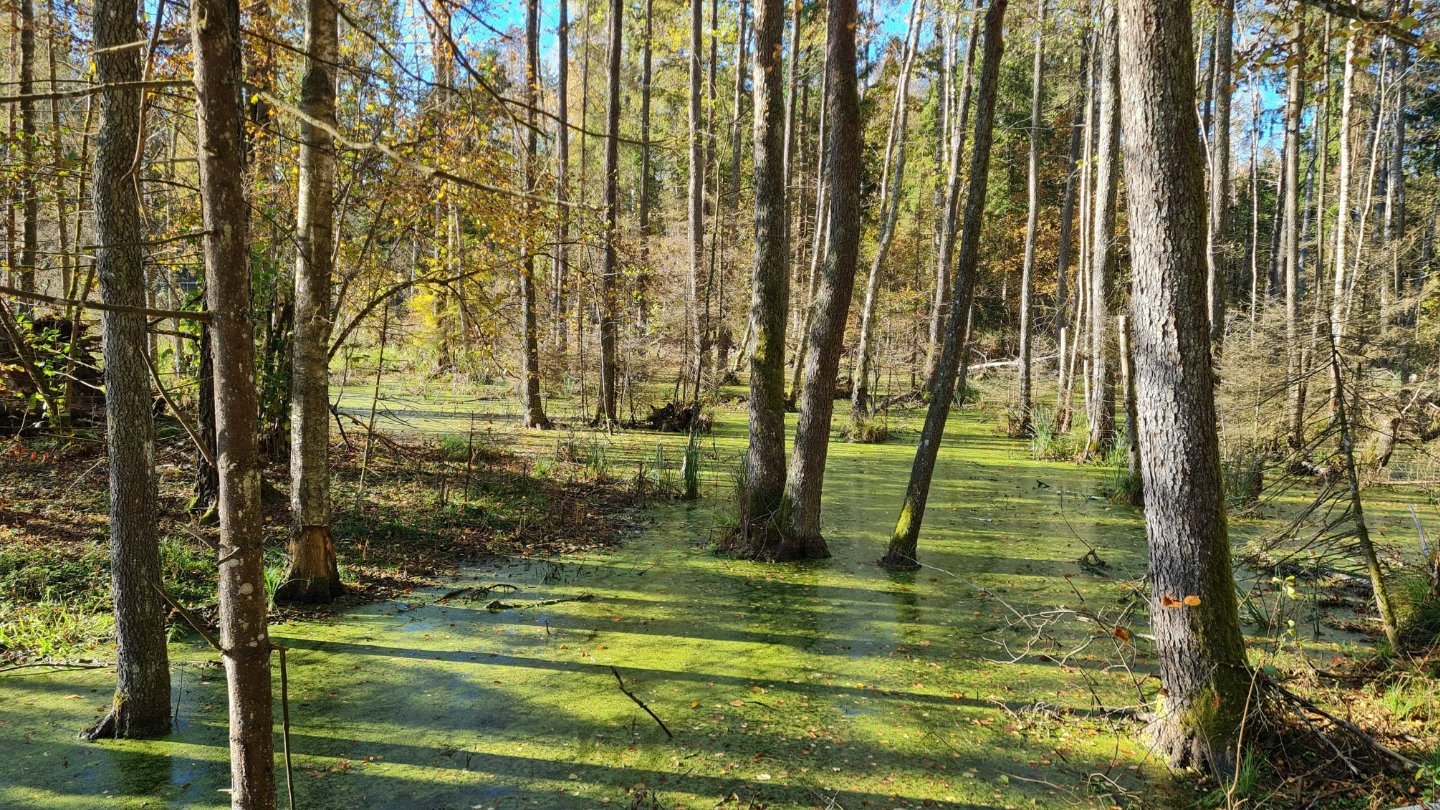
© Adelė Banelienė
50.95 ha / 126 ac, Trakai district.
These are two forest plots in Rusakalnis, located within the Trakai Historical National Park, in the Kudrionys Landscape Reserve, with the potential to gradually develop into a rich old-growth forest.
Currently, it is still a young, mixed forest, whose hilly terrain, ravines, and slopes visibly enhance its biodiversity. One of the plots contains a small karst lake, fed by local wetlands. Parts of the forest have been designated as European Union habitats – swampy deciduous forests, herb-rich spruce forests, and wetland forests. The oldest areas are over 100 years old. A large variety of fungi has been recorded, and woodland lilies were found blooming. During visits, sea eagles, cranes, and martens were observed, and other animal tracks were found.
This forest is valuable for its biological, topographic, and hydrological diversity, as well as its mosaic-like structure. The size of the protected area is also important — the larger the area left to natural cycles, the more effective its conservation.
The Rusakalnis forest has received special attention from both the public and businesses. Its future as an old-growth forest is being supported by individuals who donated for forest conservation during the first half of 2025, by those who contributed through the deposit system, and by corporate organizations.
One of the two acquired plots is the fifth “Rustle” forest, purchased with support from the initiative by the Deposit System Administrator (USAD) - thanks to active public support! Longtime partners also contributed to the forest’s conservation: carVertical, Mano bank, Žalia giria, ACALA Group, and many others.
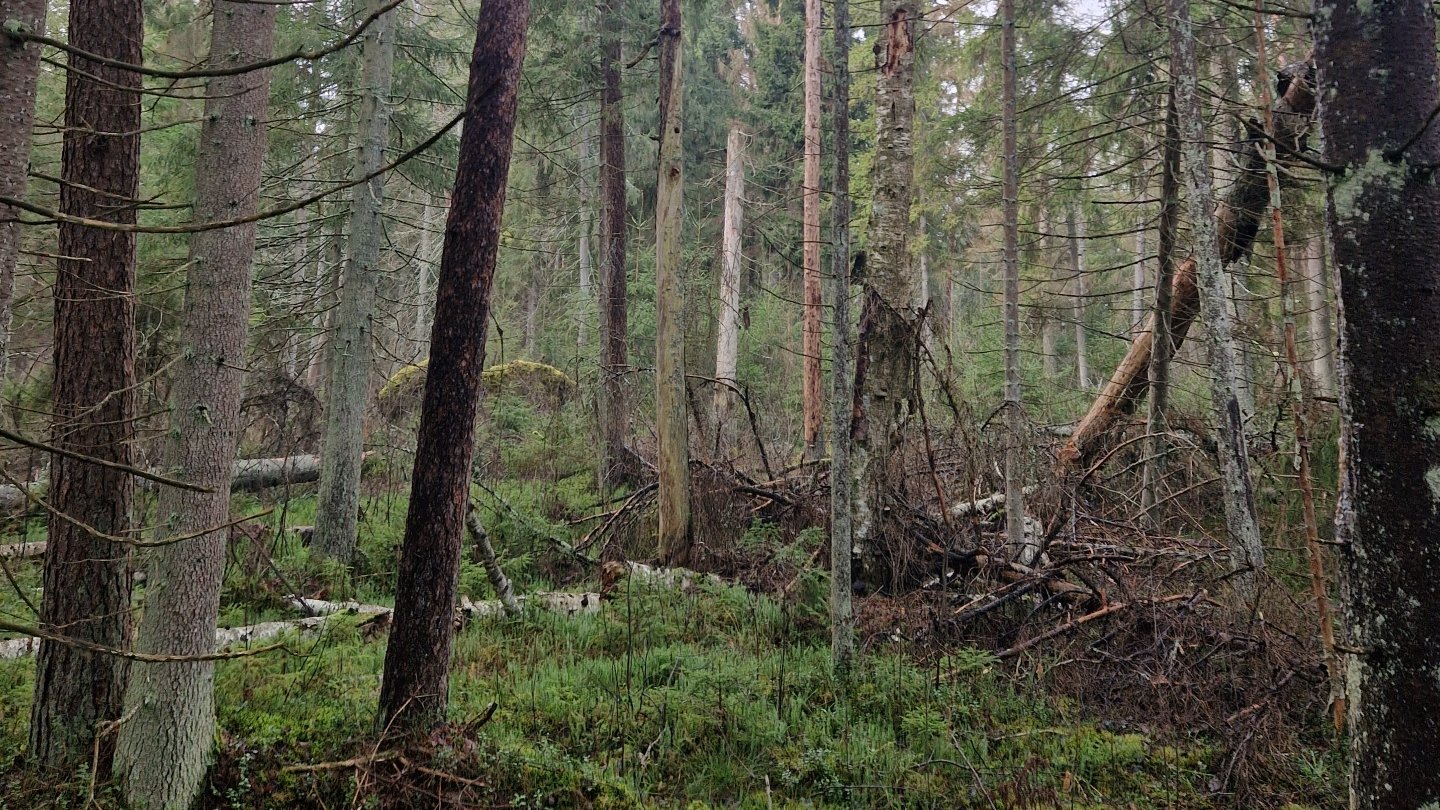
© Gintarė Grašytė
20.14 ha / 49.77 ac, Utena district, Paalsuodė village.
This is a heavily swampy, mixed forest, rich in habitats. In some areas, it is difficult to access, with centuries-old spruces, vibrant deadwood, and structural diversity; in other areas, it opens up with sedge meadows, younger alders, and birches. The lakeshore is also rich in habitats, with small streams and ditches. Woodpeckers and hazel grouse are abundant. These areas are also home to a variety of owls, western capercaillies, and reportedly even Ural owls! There are likely some rare plant, moss, and lichen species to be found.
As described by Gintarė Grašytė and Andrejus Gaidamavičius, who know the Labanoras forests best, this forest truly presents a very typical Labanoras scene — swamps, swamps, swamps.
This forest was purchased using personal income tax funds, allocated by the public for the preservation of forests in 2024.

© Linas Jankaitis
16,4 ha / 40.5 ac, Vilkaviškis district
The forest is part of a large forest massif located in the Vištytis Regional Park and is the first parcel of forest in south-western Lithuania, in the highlands of Sūduva.
Most of the forest falls within the Vištytgiris Botanical and Zoological Reserve and the Natura2000 area, which is part of the Ecological Network of Protected Areas of European Importance. Furthermore, the forest contains unique habitats of European Community importance - herb-rich spruce forests (9050) and bog woodlands (91D0), the latter of which is listed as a priority habitat in the EU. It is worth noting that the site also hosts plants listed in the Lithuanian Red Data Book. There is a high diversity of tree species, with areas of centuries-old spruce trees, as well as mixed deciduous stands of lime, birch, aspen, oak and pine, with a contrasting relief and mosaic character, with hills with rather steep slopes alternating with ravine and lowlands, and a large number of boulders. This diversity of substrates and micro-habitats provides special conditions for the continued development of local biodiversity.
This is the fourth forest to be acquired from the funds from the “Rustle” initiative by the Public Institution “Užstato Sistemos Administratorius”, thanks to the donations made by the public at the deposit system.

© Rimantė Paulauskaitė-Digaitienė
9.1 ha / 22.5 ac, Kėdainiai district, Skaistgiriai village
The Skaistgiriai forest is a forest beautifully rich with a diversity of species and ages. Old-growth maples, oaks and hornbeams can be found in the forest plot. There are also lime, aspen, birch, alder and spruce trees. Equally important, the forest is rich in snags - coarse woody debris, which provide a unique and essential habitat for hundreds of species. Alongside this, a new generation of trees and a rich understory of shrubs are also spontaneously emerging. And throughout the forest there are signs of ungulates, and the black woodpecker (Dryocopus martius). Moreover, a stream is running along the boundary of the site, which is home to beavers - ecosystem engineers. Such changes in the hydrological regime are important for the local flora and fauna.
There are only a few remaining old mixed deciduous forests, which grow in fertile soils left in Lithuania. Therefore, in order to protect their characteristic ecosystems, woodlands such as the Skaistgiriai forest - deciduous forests on fertile soils - are one of the priority habitats for the Foundation. The entire area of the forest site is designated as a habitat of European Community importance - Hornbeam forest (EC 9160).
Vilma Gudynienė, a naturalist, described the forest: "It is an extremely beautiful forest. Every islet has centuries-old maples, hornbeams and oaks. Every old tree there seems like it is wearing a coat of moss. Despite previous clearings, it is a lovely forest, with the feeling of a park and the aura of a home of biodiversity. The ephemeral (spring) flowering should be spectacular, the soil is fertile and it is strange to see the leaves of hornbeams underfoot."
Thanks to the active Foundation’s community - over 300 individuals and 30 businesses and other organisations - that came together during the Christmas time in 2024 to finance purchase of this forest.

© Giedrius Širka
6.2 ha / 15.3 ac, Varėna district., Kašėtos / Ūta villages
This forest is a lichen-rich pine forest of Cladonio-Pinetum specific to the Dzūkija region. Although the latter forests are characterised by their barren and dry vegetation, here you can find mosaic carpets of lichens and mosses, old pine forests and specific and rare species specifically adapted to these conditions. The forest also belongs to the Ūla Landscape Reserve. Perhaps the most valuable part of the site, the slope of the Uosupis stream, is characterised by a 150-year-old pine and spruce forest. The latter is designated as a core forest habitat. More than half of the Ūta forest plot belongs to the Natura2000 ecological network.
The former owner of the forest was a woman born and raised here in Dzūkija, who loved this forest and used to pick mushrooms and berries here. She and her family have fond memories of the lingonberry-rich forest and are happy that it has come under the care of the Foundation.
This forest area was acquired and added to the Foundation's care thanks to the support of carVertical company.

© Linas Staliūnas
5.86 ha / 14.5 ac, Raseiniai district., Kaulakiai village
This forest plot that came into the care of the foundation is located in central Lithuania, near the Dubysa river. The mature mixed deciduous forest is full of white alder, birch, aspen and conifers - spruce, pine. Moreover, this plot is also special in that it is dominated by oak trees whose age reaches 130 - 150 years. These ancient oaks not only create micro-habitats for rare species, but also ensure their stability, as these oaks could thrive for upcoming centuries. Also, a stream flows through the forest, next to which lays a slope reaching heighs of 35 meters. Such topographical changes create a habitat gradient for various species of plants, fungi, arthropods and birds. The forest plot is part of the Lydutuvėnai landscape reserve, as well as a nearby Dubysa regional park.
Biologist Ainis Pivoras: "Historically, fertile soils have had the lowest number of remaining forests in the country. Accordingly, such regions also have the fewest state protected areas. However, it is in these areas that forest biodiversity is perhaps among the richest. Rare and endangered forest species are also proportionately more abundant here. This is because the fertile soils are naturally dominated by broad-leaved tree species (oaks, maples, elms, ash), which have a significantly higher number of associated species than the country's dominant conifers or birches. For example, lichen and moss species growing on oak trunks are significantly more numerous than on pine birch and spruce combined. The oak tree is unequivocally ranked by scientists as the king of biodiversity in terms of the number of species associated with it. Since its beginnings, the Foundation has given priority to old deciduous forests on fertile soils in order to contribute as much as possible to the preservation of biodiversity in the country. In this case, we have managed to save a whole piece of old oak forest! This is a great achievement."
This forest has long been loved and respected by the local community - the oak woodland and streams have been looked after by generations of nature-loving children. It has been redeemed thanks to the campaign „Rustle“ by the Public Institution “Užstato Sistemos Administratorius”, thanks to the donations made by the public at the deposit system. This is the third Rustle Forest.
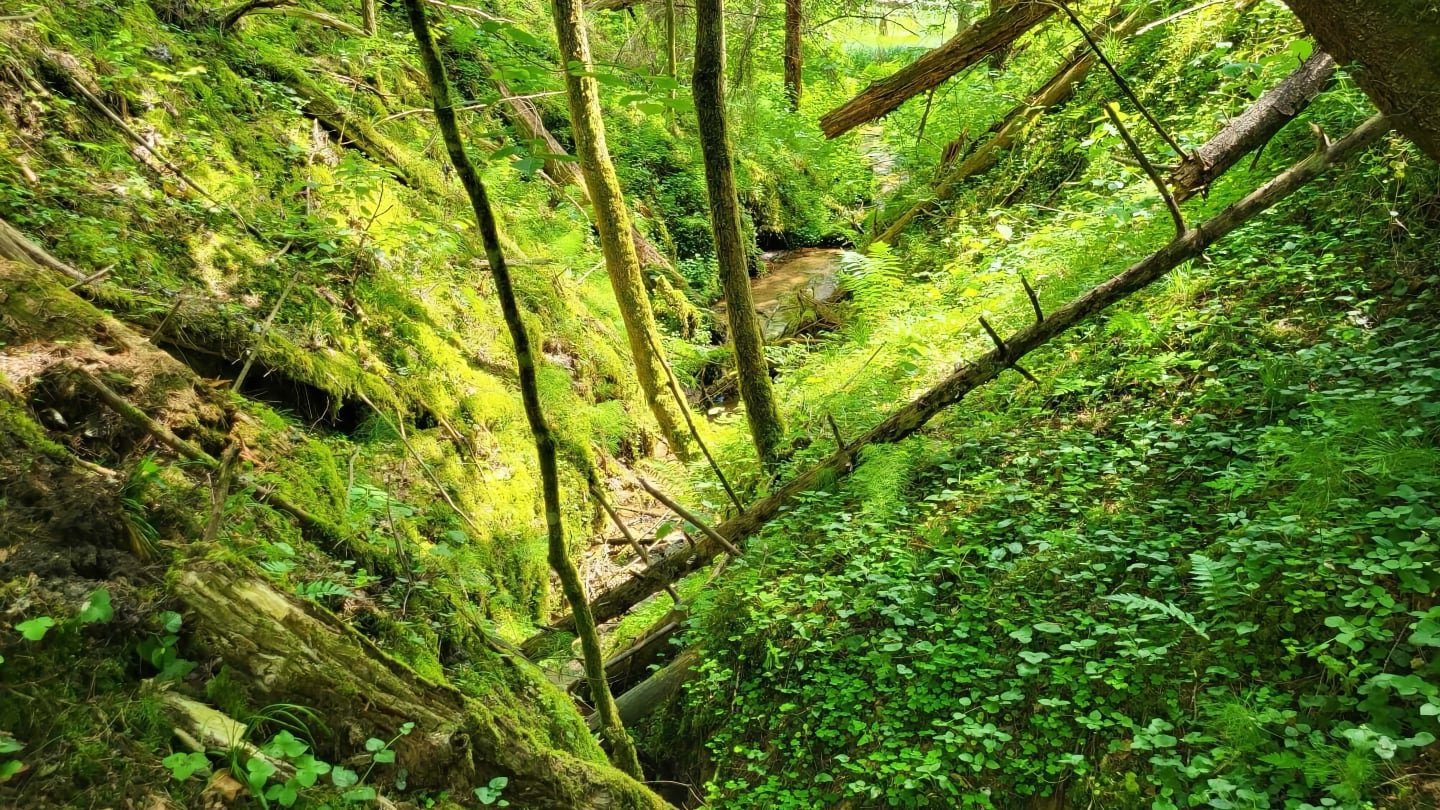
© Dalia Blažulionytė
4.75ha, Varena district, Kapiniskes village
This parcel is part of a large forest stand, special for its deep arroyo - the elevations from the edge to the bottom of the arroyo reach over 30 metres. The riparian corridor creates a diversity of micro-habitats, which in turn attract biodiversity. This forest is an old, mature pine forest. Some pine trees have been estimated to be as old as 123 years. A large part of the site belongs to the Western Taiga, a habitat of European Community importance, and to the Natura2000 network area.
The forest area belongs to the Kapiniškės Landscape Reserve, Dzūkija National Park, and the nearby Skroblaus Reserve, which ensures the protection of the surrounding forest areas and the continuity and stability of ecological conditions. However, the surrounding forests have been logged, making the protection of this area even more important.
Also, in the centre of the plot, the source of the Čirštų spring begins - through this spring, groundwater is discharged from the Bakanauskas swamp with a small lake into the Skroblaus stream. The good condition of the Čirštų spring is very important for the unique Skroblaus stream, most of whose valley is protected in the Skroblaus reserve.
According to Dr Mindaugas Lapelė: "All rivers start from their sources, and by protecting the forests at their source, we are also protecting the springs that carry their waters to the rivers, the lagoon and the Baltic Sea." The Skroblaus stream is unique in Lithuania for its water content and abundance of springs. The Čirštų spring is one of the most impressive, flowing from a headland deeply cut into the sun-warmed Dzūkija heaths, and its source is cool and misty even in summer. It is also one of the few springs flowing from west to east, and its water is considered magical and enchanting by the locals.
This forest area was acquired and placed under the care of the Sengiré Foundation thanks to the support of carVertical.
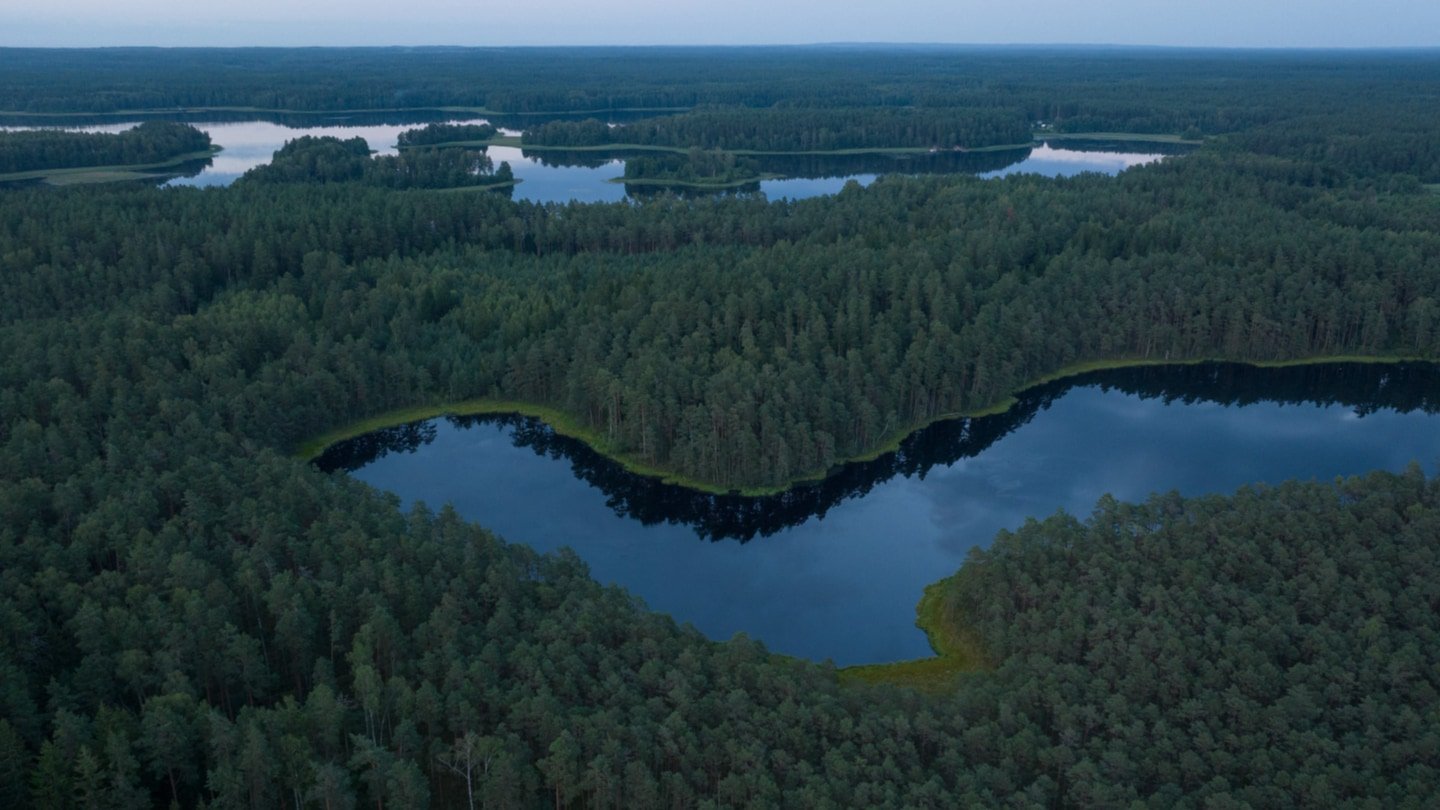
© Mindaugas Survila
39.2ha, Moletai district.
Pagraužės Forest is the largest forest area acquired and protected by the Foundation so far. Most of it is covered by old pine forests, some as old as 134 years! The forest plot is also covered with mature birch, alder and spruce trees. Historical maps dating back to the inter-war period show that the forest in the northern part of the plot has been there for a long time. Most of the parcel belongs to forest group II.
Pagraužės Forest is very special in its location - it is situated in the Labanoras Regional Park, in the Labanoras Forest. The forest includes areas important for the protection of birds and habitats (PAST, BAST).
It is also the first forest area under the protection of the Foundation to have a very large lake shoreline - it is surrounded by Galuonis and Šaminis lakes and belongs to the Dumblis Telmological Reserve, the aim of which is to preserve the characteristic marshland with a boggy swamp lake with rare species of flora and fauna. The forest is also adjacent to Lake Šaminis, a naturally dystrophic lake (habitat of European Community importance).
The forest has been placed under the care of the Foundation thanks to a public offer and the purchase of the forest parcel has been financially supported by the 2023 Personal Income Tax (PIT) donation, as well as by Žalia giria, Mano Bankas and Raštinė.
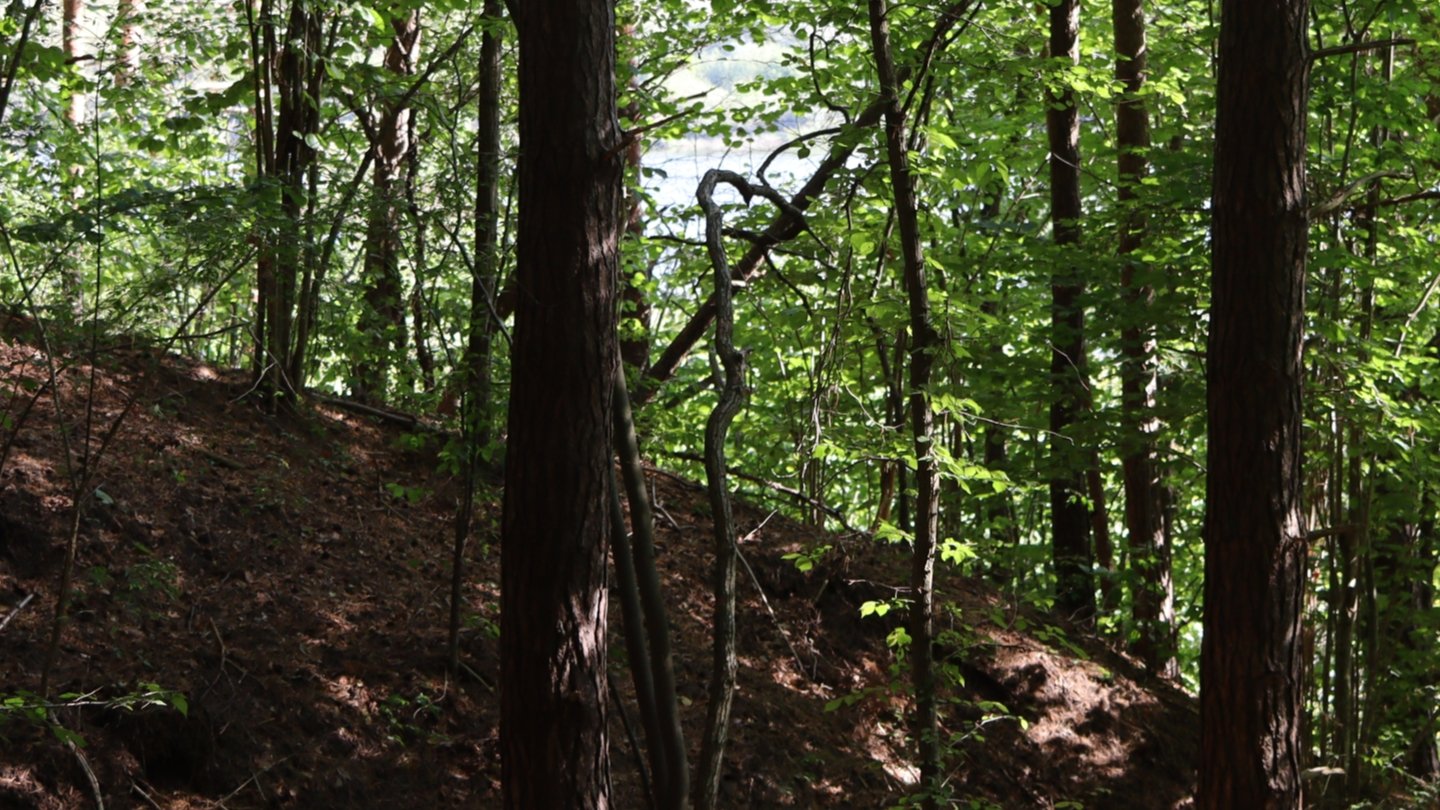
© Aurelijus Banelis
21.39 ha / 53 ac forest plot near Rūstekoniai village, Jurbarkas distr.
It’s one of the largest protected forest plots - mixed area with slopes has been preserved thanks to private regular donors and corporate donor Žalia Giria (Gelsva).
The forest in central Lithuania (Jurbarkas district) is part of the Panemunių Regional Park and has yet to become a deep old-growth forest, but the mixed forest with its many slopes already stands out for its topography and biodiversity. A large part (40%) of the parcel belongs to the Armena Geomorphological Reserve, with the Armena River flowing in the western part of the parcel and the Armena outcrops on the other side. Some tracks of weasels, foxes, roe deer, deer and wild boar have been identified. The forest is already home to semi-mature and mature grey alders, birches, maples, lindens, oaks and pines. In the south-western part of the forest plot lies a European Community importance habitat - european hornbeam woodland - very unique to Lithuania.
This forest is also significant historically as it covers the entire highland known as Bajorkalnis which was used as a hillfort, and according to today's assessment, during the battles against the Teutonic Order, it was used as a lookout hill. In the 16th-18th centuries, the local nobility apparently gathered here for meetings. Various legends have been written about Bajorkalnis, and half a century ago local dance parties were still held on the hill itself, and today the pilgrimage route of Camino Lituano / St. James' Way is crossing the site.

© Sandra Pangonytė
7.74 ha / 19 ac forest massif of 3 parcels near Žiogeliai, Randamonys villages, Druskininkai district.
The protected forest massif contains three 1.36 ha, 5.08 ha and 1.3 ha areas adjacent to each other and ensures not only the conservation of the biodiversity of the flora, fauna, fungi of the river slopes, but also the protection of the local aquatic inhabitants, such as the otters, the beavers, and the white-tailed eagles (Haliaeetus albicilla) that breed on the other bank of the river.
The preservation of those unique forests has been made possible by the generous support of philanthropist and doctor Mykolas Dumčius, and business donor Nordic Investment Bank.
This forest is located in the Dzūkija Dainava Forest, next to the Nemunas River, near the ethnographic village of Žiogeliai. It is among the most valuable massifs selected by the Foundation's scientists on the basis of 40+ criteria. The place is spectacular - and although the terrain makes it a challenging place to explore, the beauty and the abundance of biodiversity are what makes it so beautiful. The northern part of the site slopes down to the river Nemunas, the terrain rises and falls, a ravine meanders through the site, and springs abound.
The forest belongs to the Dzūkija National Park, as well as PAST (Important Bird Areas), Natura 2000, and part of the parcel is designated as a Key Forest Habitat - alkaline lowland wetlands, dry heaths, and a Habitat of European Union importance - herbaceous spruce forests and aloes, a priority habitat of importance for Lithuania. Some of the pine forest reaches 130-140 years old, the spruce forest is about 120 years old. A mature stand with dead (living) wood will undoubtedly enrich the abundance and diversity of woodpeckers in the area.
The forest has a rich flora of spore-forming vascular plants, with six species of ferns recorded during the initial survey: Athyrium filix-femina, Dryopteris filix-mas, Dryopteris carthusiana, Phegopteris connectilis, Gymnocarpium dryopteris and Polypodium vulgare. Gametophytes of ferns have also been observed in the grove.
This forest is not a nature reserve, so the threat of logging was imminent - the forest adjacent to the Foundation's parcel was clear-cut in the winter of 2021-2022.
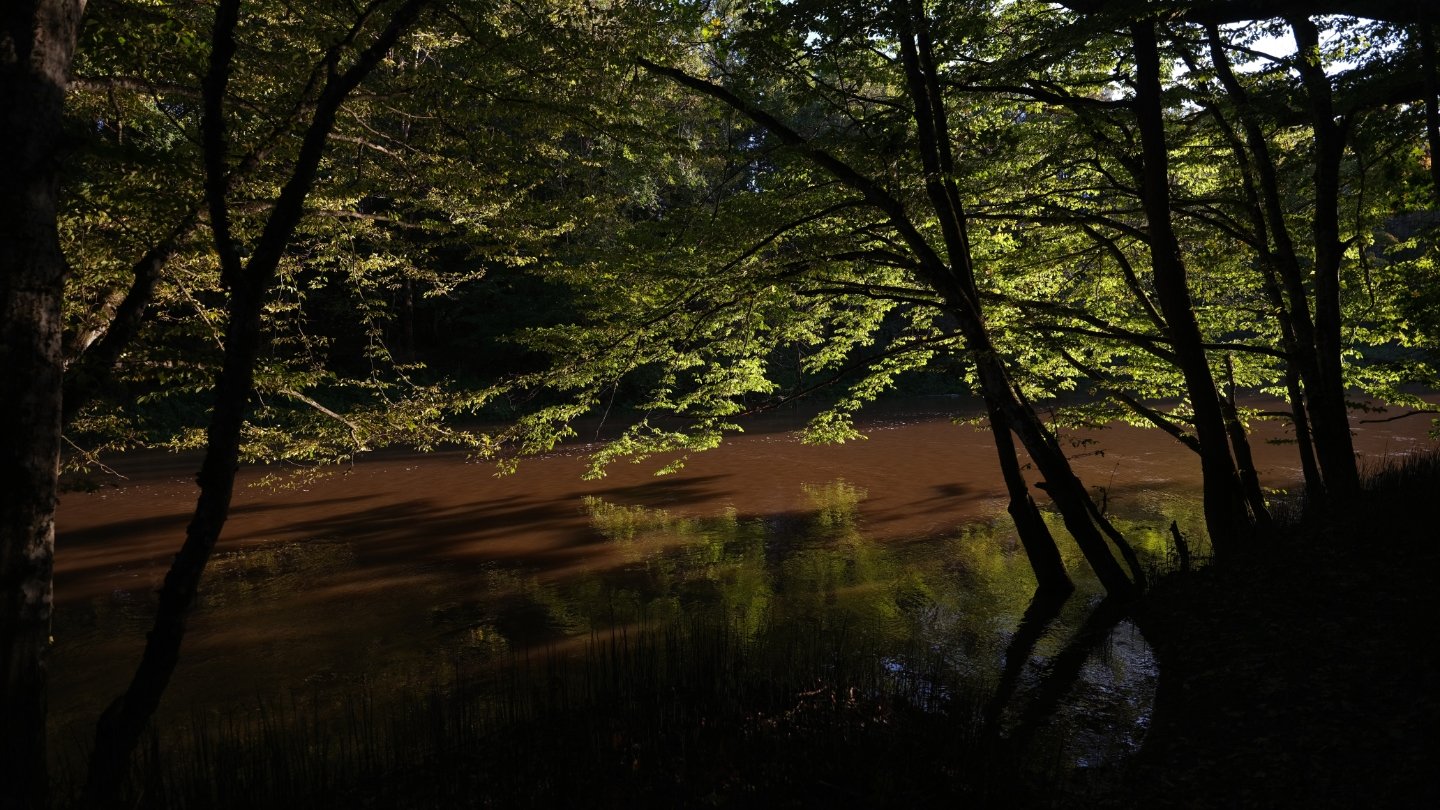
© Edmundas Stundžius
6.08 ha / 15 ac forest plot near Pangiriai, Šilininkai villages, Šilutė district.
This is the first forest plot acquired by the Foundation in Western Lithuania. The forest is located by the Veiviržo River, close to the villages of Pangiriai, Šilininkai in the Šilutė district. The old Evangelical Lutheran cemetery of Šilininkai village is a nearby cultural heritage site. The potential old-growth forest was acquired thanks to the support of Mano Bankas in 2023.
It is a forest group IIA parcel with the distinctive feature of the 800 m long bank of the Veiviržis stream, with its rich and varied deciduous forests on the slopes. The forest will have to mature before becoming an ancient forest, but there are already elements of old-growth forest, such as snags, coarse woody debris, oaks celebrating their centenary, mature aspen, linden, birch, and white alder trees. The forest adjacent to water bodies are characterised by a particularly high abundance of distinctive micro-habitats and biodiversity. The large dead (livng) wood along the coast receives relatively more moisture and sunlight, which provides favourable conditions for the establishment of more selective species of insects, lichens and fungi.
In the place of the preserved forest, not only the woodland, but also the entire streamside will be left to develop on its own, thus making the coarse woody debris and the roots of the trees an excellent shelter and spawning ground for the protected species of fish and otters of the Veiviržis Hydrological Reserve. Beavers will be able to burrow in the forest slopes in peace. The site is also distinguished by the regionally scarce evergreen thickets of the rough horsetail (Equisetum hyemale).
The forest falls within the territory of the valleys of the Veiviržo and Šalpė rivers and belongs to the Veiviržo Ichthyological Reserve (zoological-ichthyological; habitat protection). A small part of the site is a grassland (0.4 ha / 0.9 ac).

© Rimantė Paulauskaitė-Digaitienė
4.92 ha / 12 ac forest plot in Alytus district, near Užupiai village
This plot of land came under the care of the Foundation thanks to the active care of the local community. The proposal came from the local forest ranger, was evaluated and selected by the Foundation's scientists as a potential old-growth forest, and was acquired thanks to the funding of Žalia Giria in 2023.
The Užupiai forest belongs to forest group II. It is situated on the slopes of rivers Tolupė and Alovė, with many springs and streams. Nearby, on the other side of the stream, there is a unique natural object - the Alovės outcrop, where a moraine fault is clearly visible. The forest is striking, and while for humans it’s difficult to explore because of the forks, slopes, springs, bends in the river, smaller outcrops, and old riverbeds, it’s an important migration site for moose and their calves.
The forest is dominated by pine, spruce, alder, 90-100 year old birch trees. Maples, oaks and hornbeams occur on the slopes. The forest is also rich in living wood. A small, open, wet meadow can be found on part of the site.
The surrounding forests are also valuable and are free from economic activity. The Užupiai forest contains designated habitats: European Community importance 9050 - Herbaceous spruce forests, core forest habitat C1 - wet alder forests.
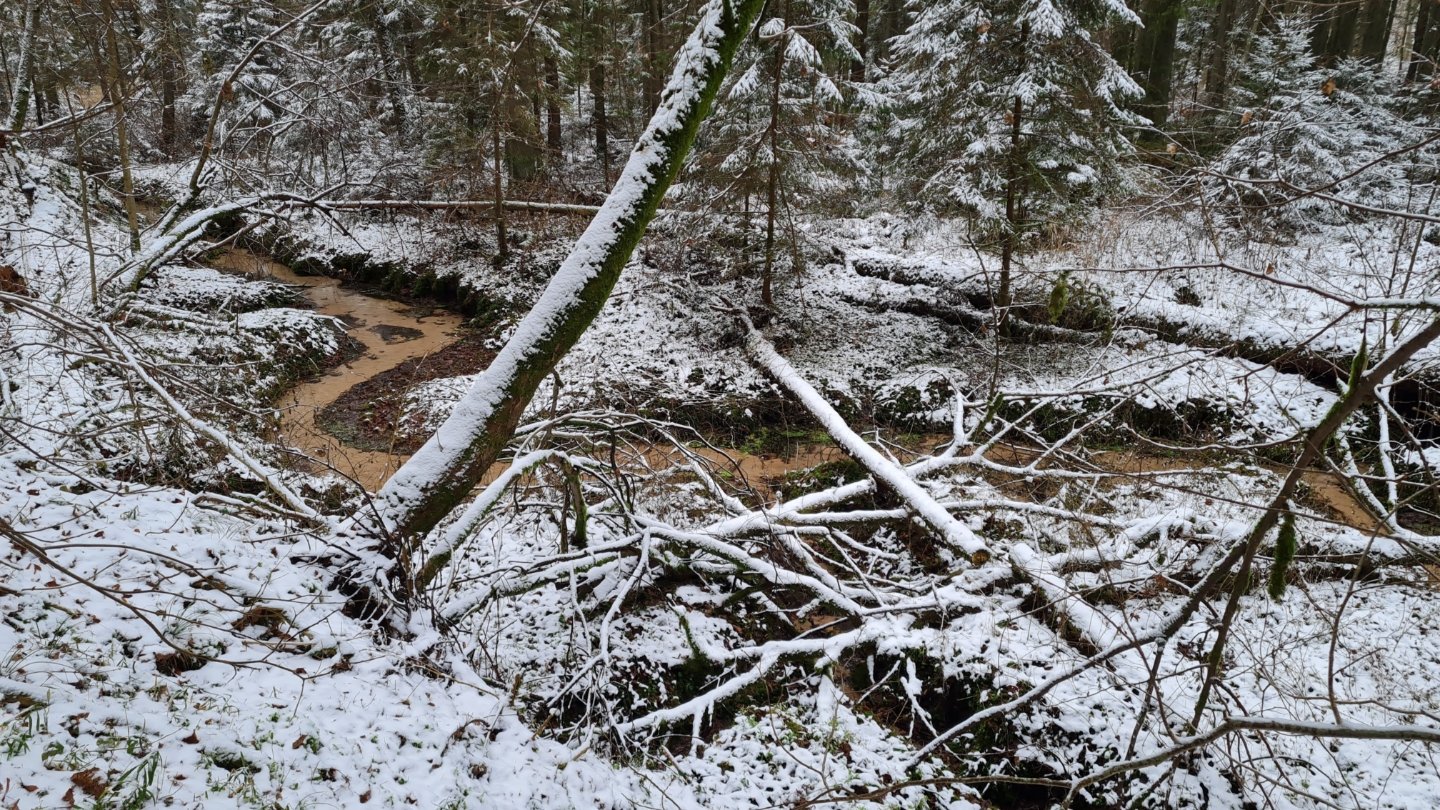
© Aurelijus Banelis
33.5 ha forest plot in Švendubře forest, Druskininkai district.
This is one of the largest contiguous plots of forest preserved in a culturally and naturally significant place - the Raigardas Landscape Reserve near Druskininkai.
The legendary Raigard valley is surrounded on all sides by pine forests, with the birch forest in the centre, and the Nemunas valley is full of old riverbeds, streams and even verdents. Ornithologist Marius Karlonas has recorded about 120 species of breeding birds in the valley alone, and over 160 different winged birds in total.
The area is home to biologically valuable stands of 161-year-old spruce and 150-year-old pine trees, and the stream running through the middle of the site is flanked by mature alder trees. There are also valuable botanical species listed in the Lithuanian Red Data Book, such as Listera cordata, Trichocolea tomentella, Alyssum gmelinii and Dianthus arenarius.
The Foundation's community has made a significant contribution to the conservation of the forest: those who have donated their share of income tax throughout 2022, regular supporters of the Foundation, businesses, and those who have actively responded to the call to conserve this unique place. In total, over 1,230 environmentally-minded people and over 30 business organisations.
In 2024, the forest area of the Raigard valley protected by the Foundation was expanded by another 6 hectares thanks to the campaign "Keisk tarą į šlamančius" initiated by the Public Institution "Užstato Sistemos Administratorius", during which Lithuanian citizens could choose to donate the amount of deposit received at the recycling drop off mashine to the activities of the Sengirė Foundation. Thanks to active citizens, an area has been preserved and named Šlamančiai Forest.
According to the Foundation's scientists, if the forest is allowed to continue to develop naturally, it will only increase the number of fungi, lichens and invertebrate species associated with living (dead) wood. As it is a large, contiguous parcel, the forest will better support the stability of ecological conditions that are important for the survival of species.
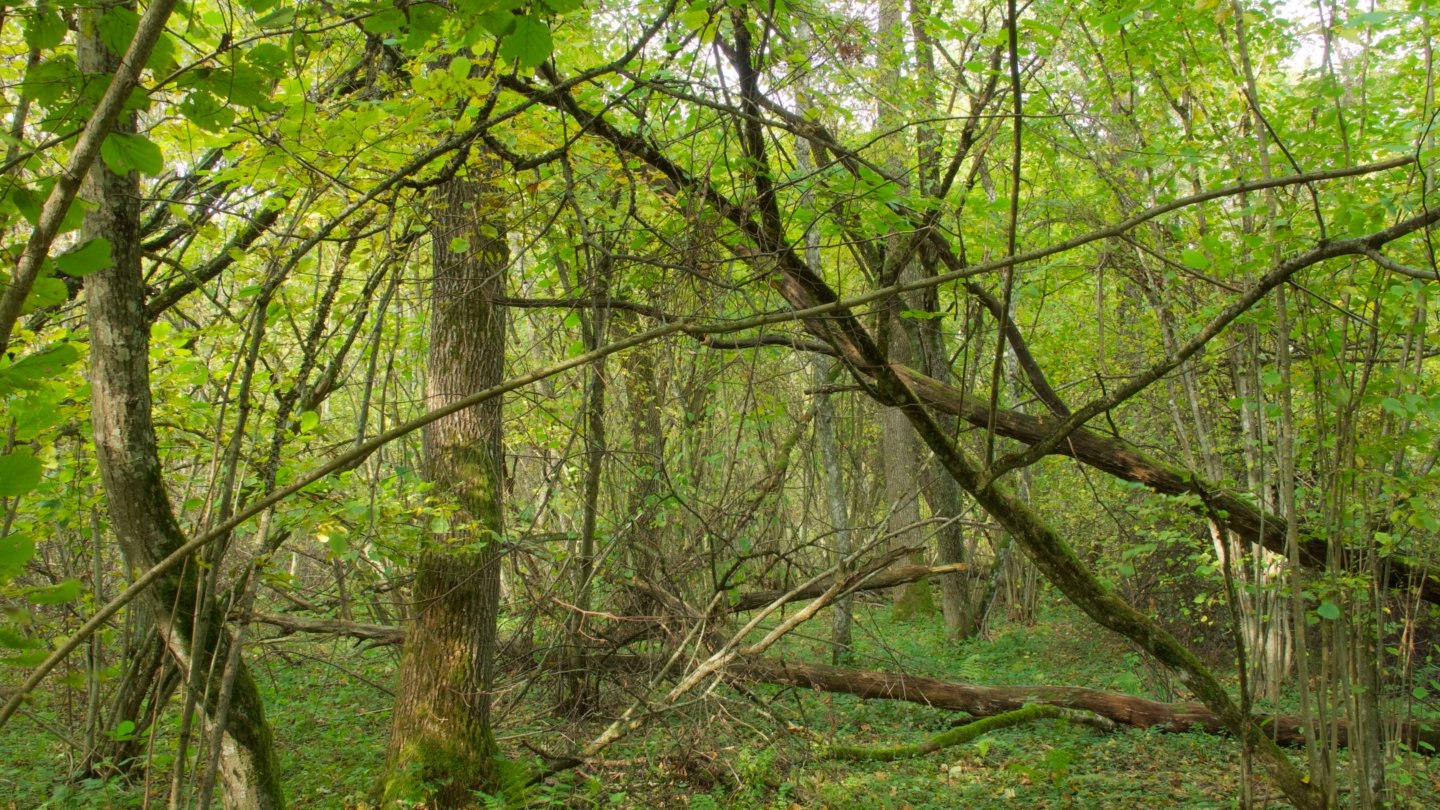
© Mindaugas Survila
2.95 ha / 7.3 ac forest plot in Širvintos district, Špokiškis
Mindaugas Kanišauskas passed on the forest to the Foundation as a gift to nature. The land on which the forest plot is located had belonged to his family for about one and a half hundred years.
"I believe that this forest is already more valuable in a natural sense than in a material one. If there is an organisation or a group of people who care about it and will try to keep the forest as it is now, and it will only get better, that is the most wonderful thing", says Mindaugas about his generous decision.
Having nurtured a close relationship with nature since childhood, Mindaugas still finds peace and escape from the hustle and bustle in the forest. His great-great-grandfather also once worked the fields around him, and the plot is also dear to him as a link with his ancestral heritage. Thinking about the future of this patch of forest, the donor wanted it to remain as it is: untouched, without human interference. This led him to donate the forest to the Foundation, trusting in its mission to preserve the forest untouched and undisturbed by human activity for future generations. The donated plot is also named after his grandmother, Kazimira Kanišauskienė.
The donated forest area is a 70-year old oak woodland with white alder, understory covered with hazel and spruce, with a designated European Community Important Habitat (ECI Habitat) - alluvial forests. Over time, the site will become an undisturbed, centuries-old old forest. Although the forest area is rich in deciduous trees, they are as important to the ecosystem as pine and spruce forests.
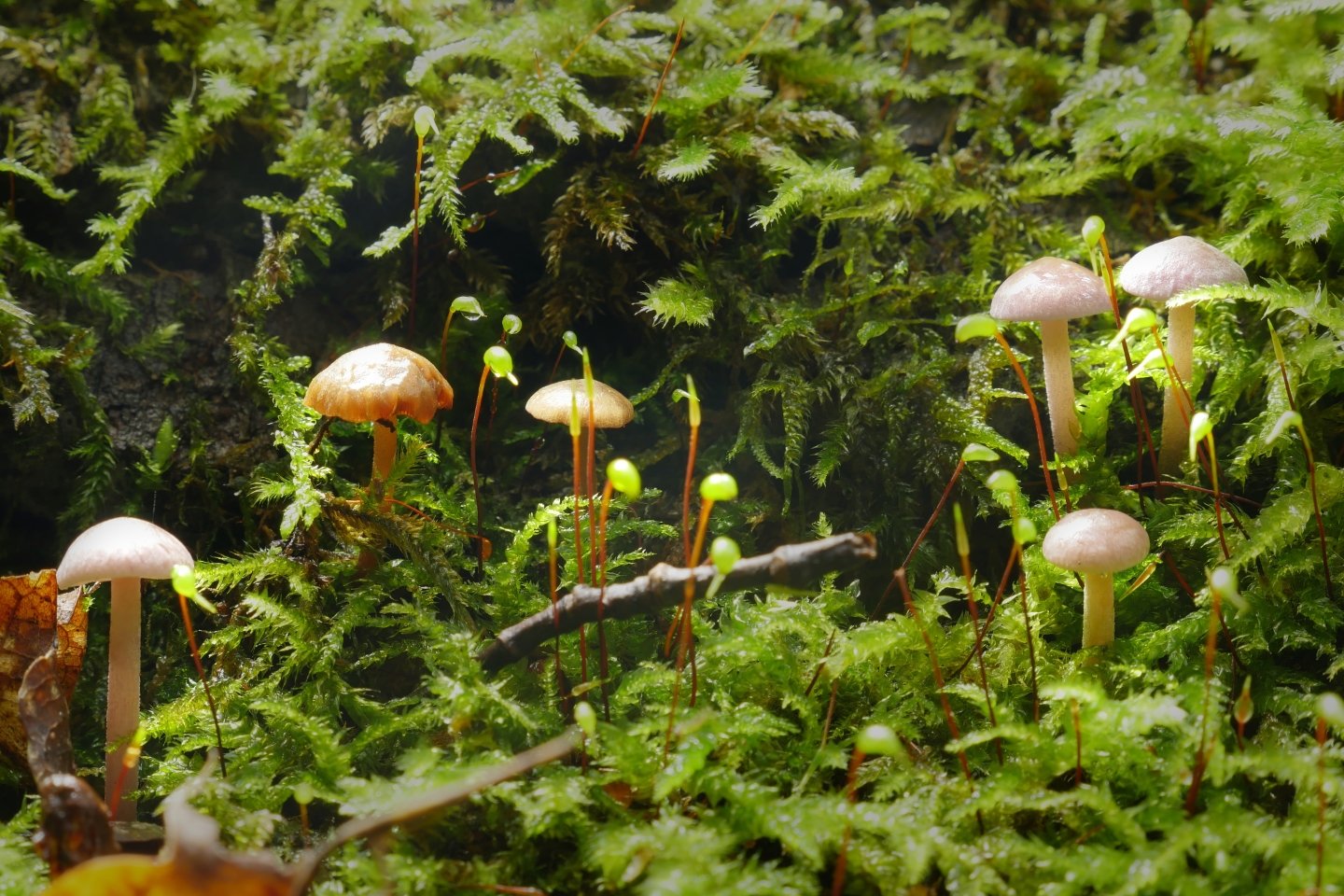
© Mindaugas Survila
19 ha forest parcel in Utena distr.
This is one of the largest parcels under the Foundation's care, preserved on the initiative of the photographer ornithologist Kęstutis Čepėnas - "A few years ago, when I saw a parcel adjacent to this one, with the same valuable stands of trees, being cut down, I realised that I had to take action, or we would lose this unique oak woodland forever". After contributing as much as €30,000 to buy the forest, he brought together several other like-minded individuals - the Šimčikas family and Robert Stupak - who also contributed financially to the purchase. The rest of the buyout was financed by the Sengirė Fund through a generous community donation received in 2021.
The most valuable part of the plot is an old deciduous forest with 130-year-old oaks, old aspen, ash and linden trees. The area is rich in dead (live) wood, a beaver den and traces of ungulate activity. The Foundation's scientists found that the forest is home to the already mentioned woodpeckers listed in the Lithuanian Red Data Book (A list of nationaly threathened and protected flora and fauna species), such as the white-backed woodpecker (Leuconotopicus albolarvatus) and the grey-headed woodpecker (Picus canus). The area is also important for the lesser spotted eagle (Clanga pomarina), which accounts for more than 20% of the European population in Lithuania. Part of the site contains a core forest habitat of broadleaved forests and a European Community habitat of broadleaved and mixed forests. Indicator species of the core forest habitat found during the surveys were the lichens Bacidia rubella, Acrocordia gemmata, Lobaria pulmonaria, the fungi Ophiocordyceps cf. Stylophora, Alder Beetle (Schizophyllum amplum), Chestnut Hole Beetle (Picipes badius), the moss Squirrel Whitefly (Leucodon sciuroides).
In 2022, mycologist Dr. Reda Iršėnaitė discovered in this forest a very rare and rapidly declining species of fungi in the world - the Blue-leaved Small Spore (Baespora myriadophylla). Full story. And a soil excavation in 2023 showed that the land of this forest has never been touched by human activity. Press release.
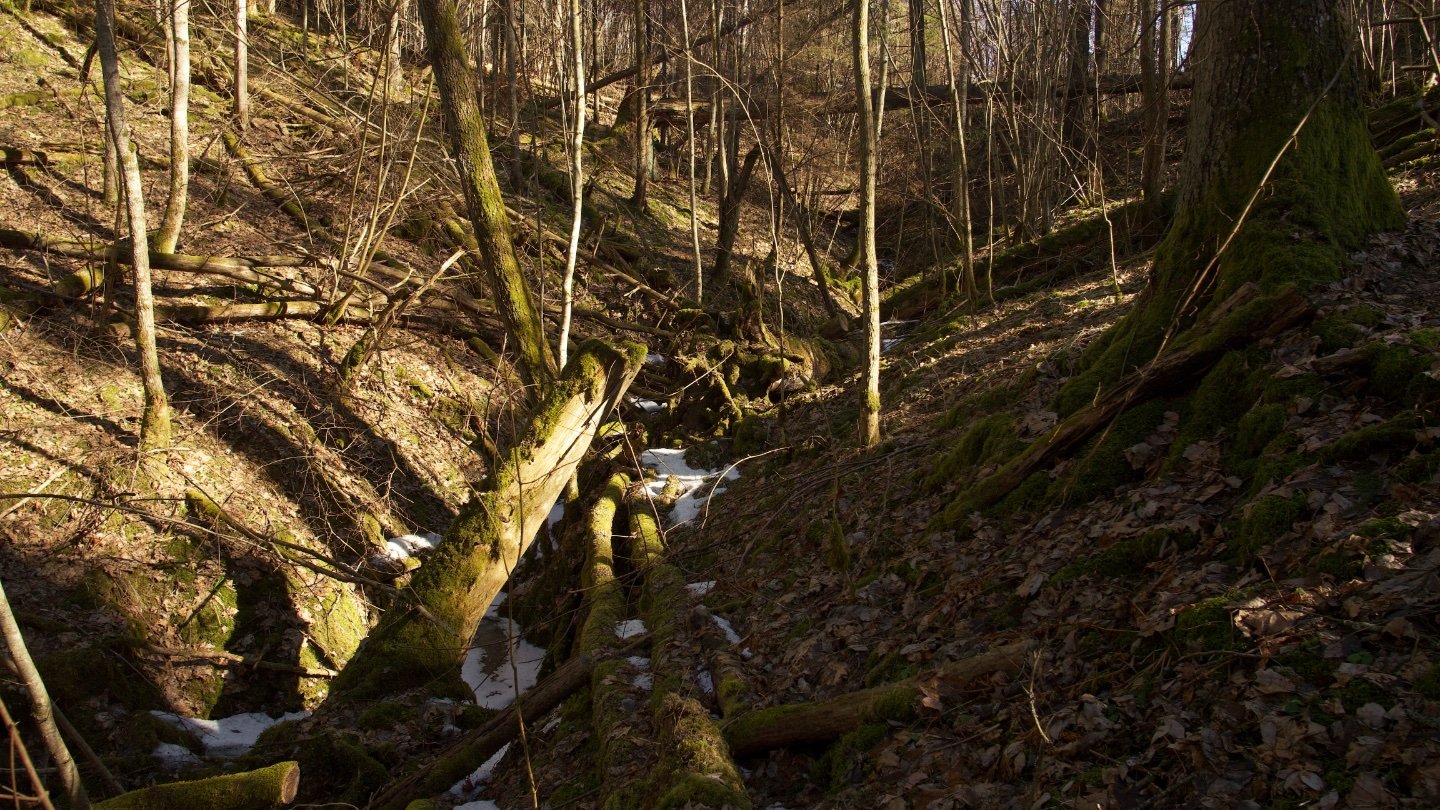
© Mindaugas Survila
1.31 ha / 3 ac, Aukštaitija region (exact location withheld due to biosensitivity)
A small but very picturesque place with steep river slopes and ridges full of fallen trees as bridges. There is a protected bird's nest on the plot, also plenty of indicative species of key woodland habitats have been found: a very rare mushroom in Lithuania — Sclerencoelia fascicularis, protected fungi Rhodotus palmatusrare, rare lichens Pyrenula nitidella, Acrocordia gemmata, Reichlingia leopoldii, Nowellia curvifolia. Moreover, some key woodland habitats such as (D.3 — stream slope), habitats of EU importance (9180 — ditch and slope forests and 9050 — spruce forests rich in grass).
The new castle mound was discovered here in 2016 by the scientist of the foundation during his research in the region. This unique plot of land with a mound recognized as a national object of cultural heritage.
It was purchased with the help of community donations and a part of the prize that Mindaugas Survila, the founder, was awarded in 2021 — the Environmental Prize by President V. Adamkus.

© Mindaugas Survila
12.53 ha / 31 ac, Galiniškis, Molėtai district
The plot is recognized as the key woodland habitat (H2 — Raguva, B2 — other broadleaved forests) and the habitat of EU importance (9020 — broadleaved forests), which, despite the high biological value and their rapid decline across Europe, have hardly any legal protection at all, so it is gratifying to preserve at least some of them.
The most valuable is the northern part of the forest, where there is a relatively old mixed deciduous forest of about 90 years old. There is a lot of dead (living) wood there and the irregularity of the terrain creates the area rich in micro-habitats and biodiversity.
The Black Stork (Ciconia nigra) used to breed in the area, and a rare lichen species Lobaria pulmonaria has been registered. This indicates the good condition of the area, the high biological value. More detailed biological research of the forest has already started.
The southern part of the plot was logged 30 years ago, so it is still healing its wounds and it will have to grow up to the full potential, but it is also very important as a buffer zone.
This forest has been fully purchased with the funds from a support initiative “Together with nature” by a corporate sponsor Žalia giria (Gelsva, UAB).
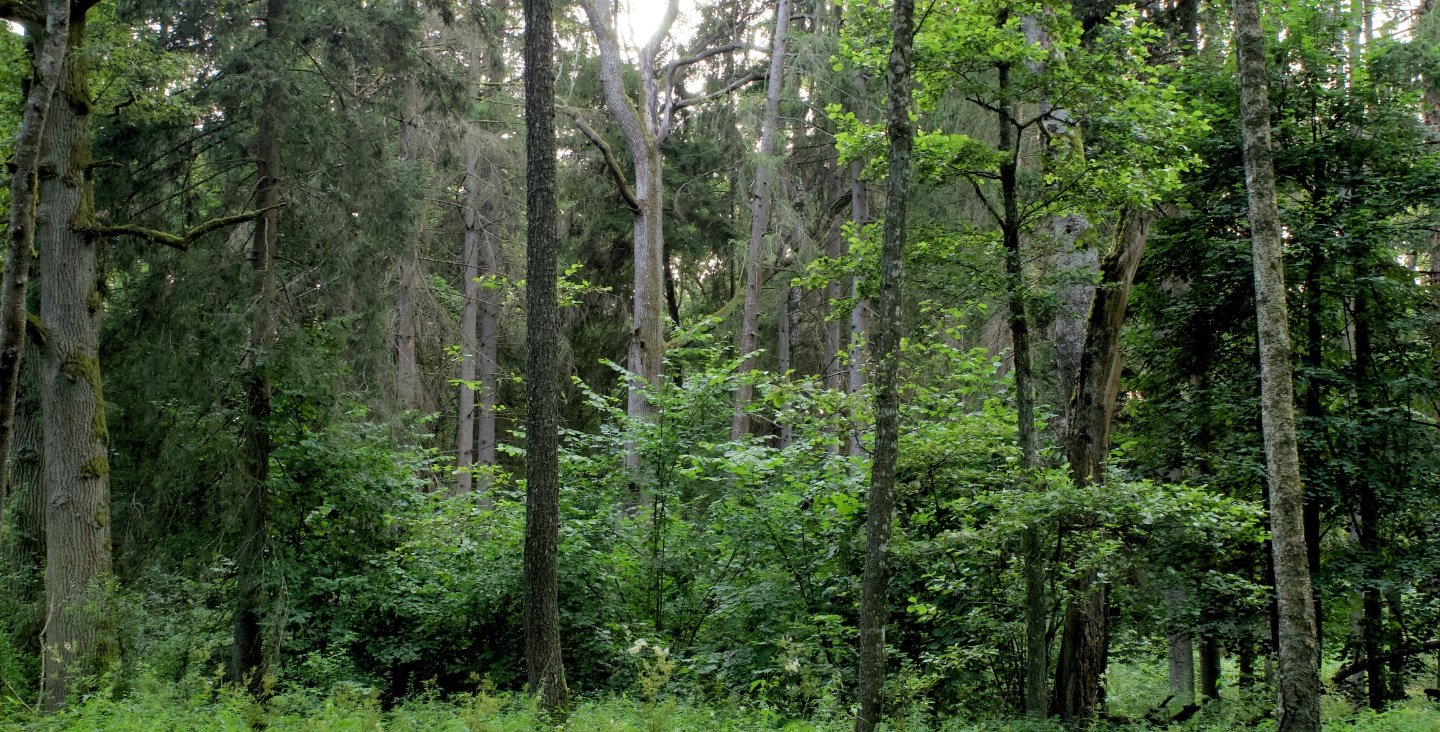
© Mindaugas Survila
4.48 ha / 11 ac, Prienai district
This is the third plot in the Balbieriškis forest massif — the nice beginning of the larger massive of protected land to be formed. The forest belongs to the Oak Botanical Reserve and is just 500 metres away from the other two plots previously acquired by the foundation. Part of the site has also been recognized as a habitat of EU importance (9160).
This is a mature, mixed, self-sustaining, heterogeneous, multi stemmed, mosaic-structured forest. It is rich in oaks, with an admixture of aspen, alder, birch hornbeam and spruce. There is a number of fallen trees in various stages of decomposition in this forest area, which creates a variety of micro-habitats. Although the terrain is relatively flat, there are also wetter, sometimes waterlogged areas.
A private benefactor, Gabrielius Gedvila, a lawyer living in the USA, a former Chief of Staff of President Valdas Adamkus, who founded the Dana Gedvila Fund in memory of his late wife, has donated USD 20k to purchase a forest parcel in Balbieriškis. As a thank you gesture, the grove was named after his wife.
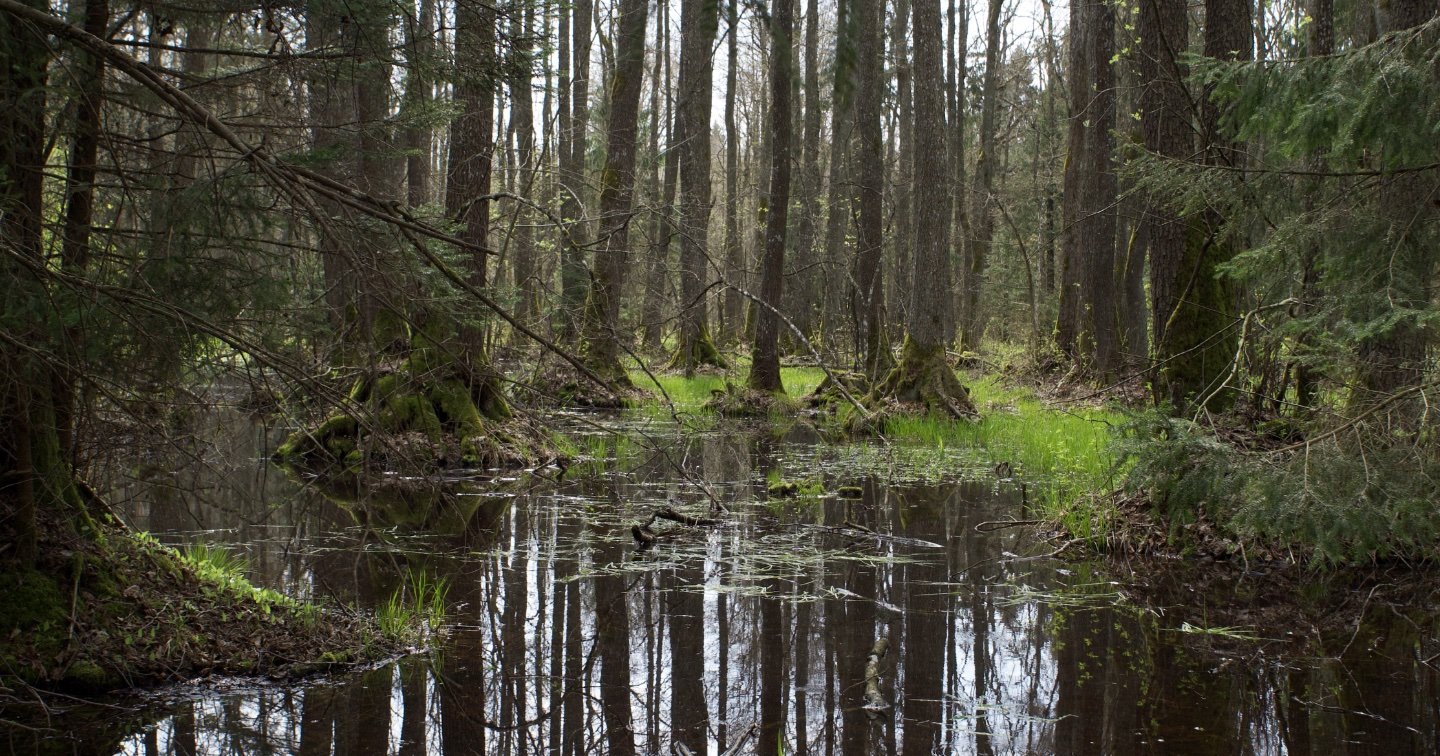
© Mindaugas Survila
1.69 ha / 4 ac, Prienai district
The second forest plot acquired by the foundation, bordering with another plot already protected, as well as with the state forest habitat, which allows for the easy spread of various species of fungi, lichens and other species. The plot is located in the Oak Botanical Reserve, and has valuable forest habitats such as bark beetle forests (9160) and alluvial forests (91E0). The stand is heterogeneous, with a diverse tree canopy dominated by linden (50 m) and spruce (90 m), with alder in wetter areas. There is a significant admixture of aspen, birch and oak. There are oak trees approx. 140 to 160 years old. The branches are strong and can easily support the nests of both eagles and black storks. According to current assessments, the forest is already valuable as a potential key woodland habitat.
This forest plot was purchased using the community’s 1.2% personal income tax donations received in 2020.

© Darius Babelis
2.6 ha / 6 ac, Anykščiai district, Kiaulėnai forest
When visiting this forest, you can already see a lot of living wood (this is how we call dead wood) that is home for thousands of organisms of all kinds. Semi-ancient (~60-80 years old) forest, dominated by spruce, but most of the plot is beautifully mixed with birch and aspen, also oak, maple, black alders. It’s great that despite the young age, there are already some living wood. Abundance of fungi species indicates that the forest ecosystem is healthy and multidiverse.
Donor of this beautiful forest is Mrs. Janina Breivienė, and like her family ancestors, was born and grew up right next to this forest. Her family loved to take long walks to pick mushrooms and berries in the forest. Dr. J. Breivienė is an ophthalmologist, also one of the first members of independence movement Sąjūdis. She is an example to many with her thoughts, advice and moral attitudes.
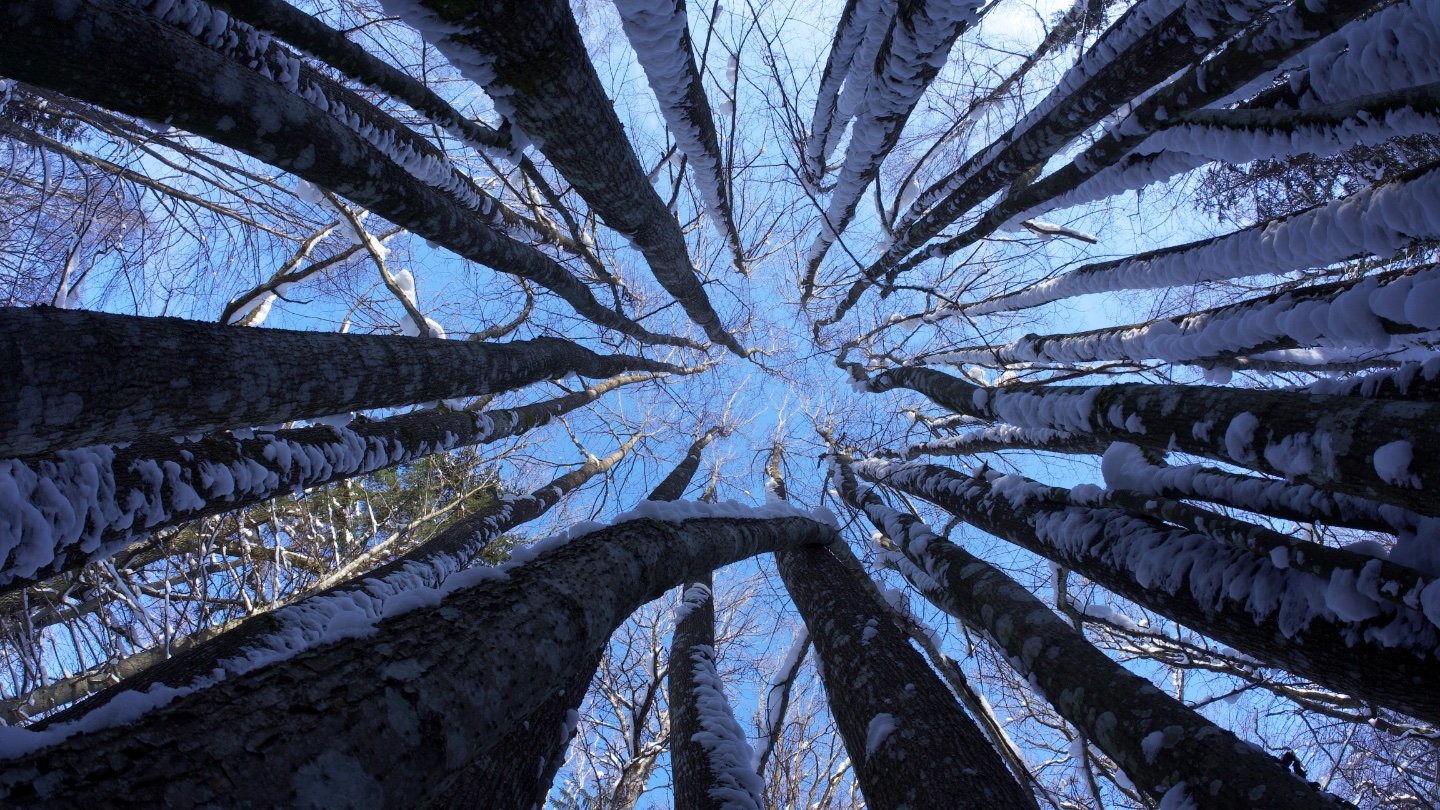
© Mindaugas Survila
3 ha / 7 ac, Prienai district
Balbieriškis forest massif is a large island of broadleaved and mixed forest in fertile fields between Žuvintas reserve and Nemunas loop regional park. The entire plot falls into the territory of the Oak Botanical Reserve.
Great natural value of the plot — the presence of 3 types of habitats of European Union importance — spruce groves rich in grass, bristlecone groves, alluvial forests. The variety of key biological elements indicates the forest being valuable not only for Lithuania, but for the whole Europe. This plot is a very mixed, mixed-aged, middle-aged forest growing in a relatively moist habitat. The drier part of the massif is dominated by linden, spruce, aspen, oak, hornbeam, while the wetter part is dominated by alder and birch. On the outskirts of the plot grows a relatively young, but already a very impressive 40-stem linden tree
This is the first forest plot acquired by the Foundation.
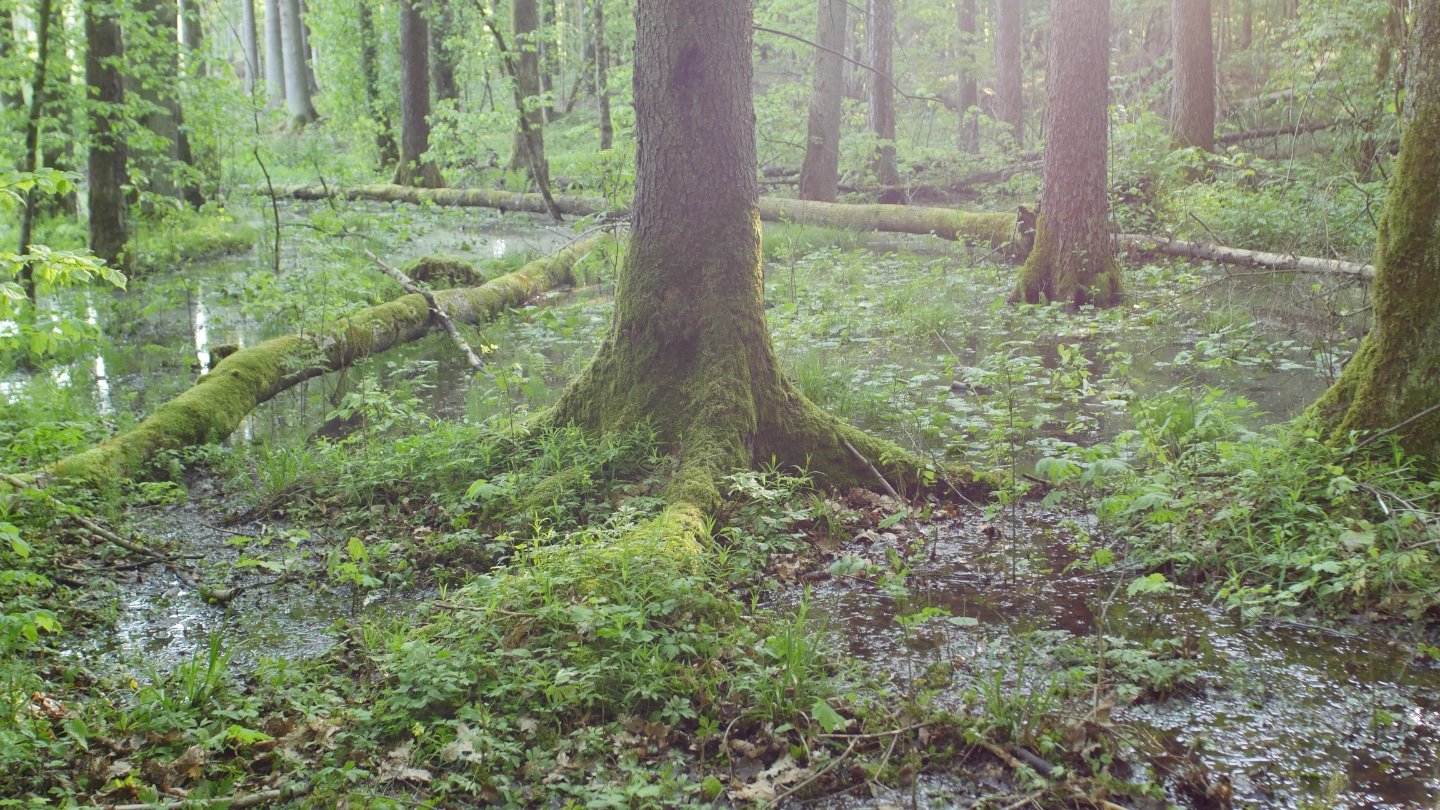
© Mindaugas Survila
It is a relatively young (average age of trees — 75 years) mixed, fertile forest dominated by spruce, birch, aspen, black alder & hazel. A part of the forest is wet or temporarily wet, and is identified as a habitat of European Union importance. As individual trees die, large dead (living) wood gradually appears in the stand, allowing rarer deadwood-associated species to establish. At the same time, thinning stands are already forming, increasing the mosaic nature of the stand and the diversity of micro-habitats.
2 indicative species of key woodland habitats have been found on the plot — mosses (Ulota crispa) and lichens (Metzgeria furcata). In 2020, mating songs/call sounds of protected bird species — greyheaded woodpecker (Picus canus) and common crane (Grus grus) — have been recorded.
Professor Vytautas Smailys has donated his own forest for the foundation right after the announcement about it‘s establishment. Nature as a value comes from his childhood: “All thanks to Lithuanian forests for having the clean air and water.”
Show more
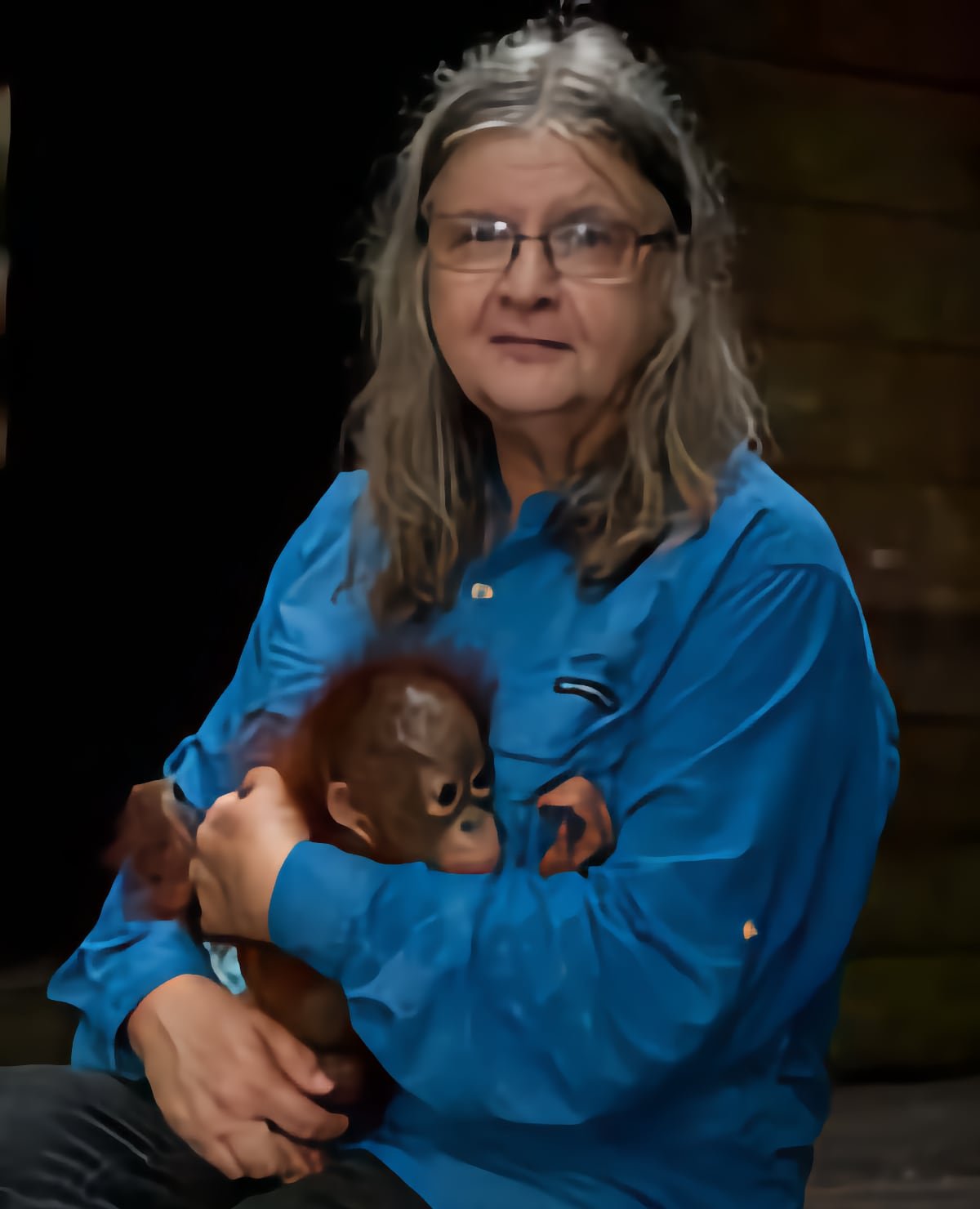
The Patron of the Ancient Woods Foundation, world-famous scientist, conservationist, educator.

Author and main initiator of the Foundation, documentary filmmaker
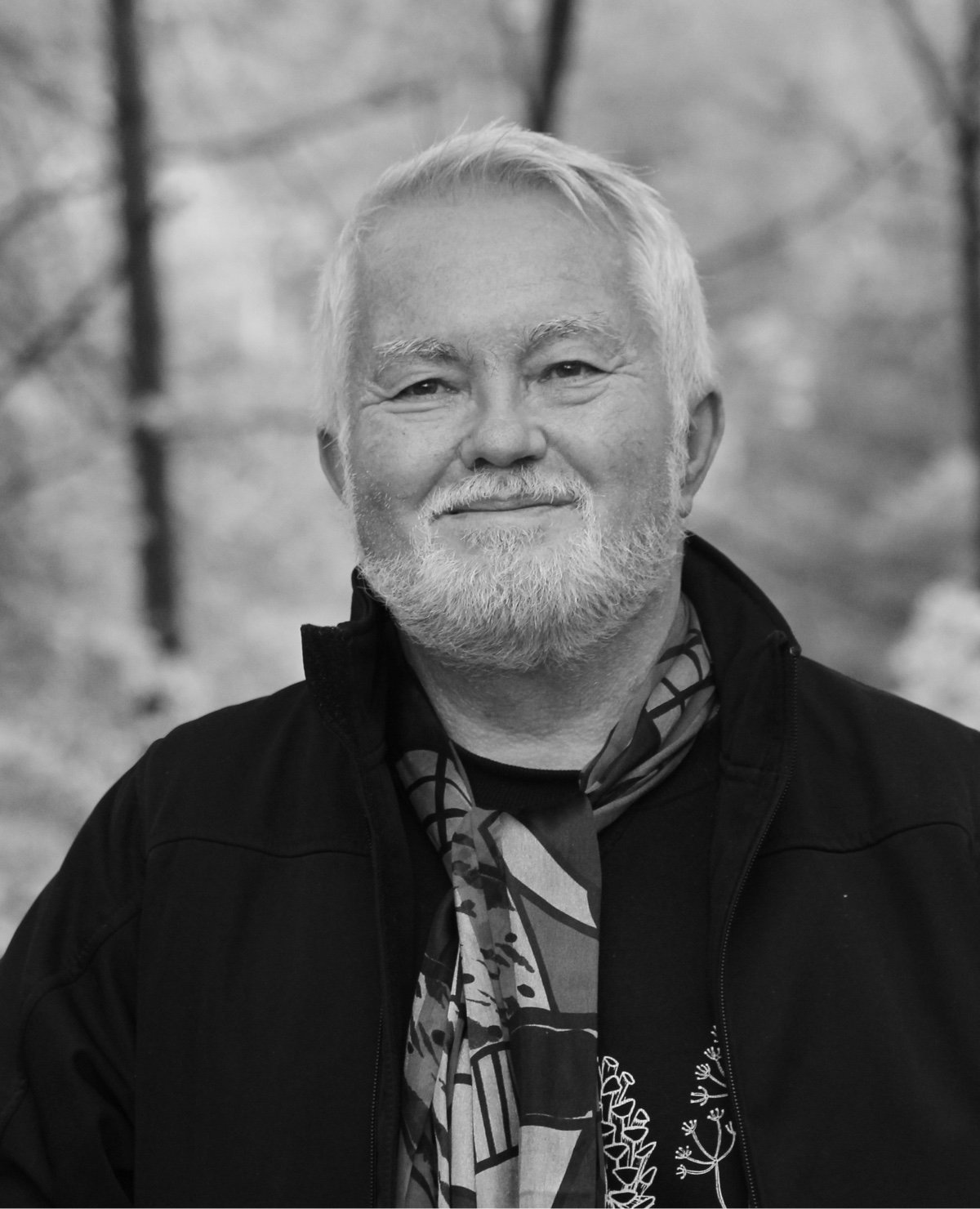
A botanist who has dedicated his life to the conservation of nature and public education

Biologist, that works in botany and forest ecophysiology

Organizational design and development strategist

Lawyer, responsible for the legal issues of the Foundation's activities

Programmer responsible for the technical decisions of the Foundation
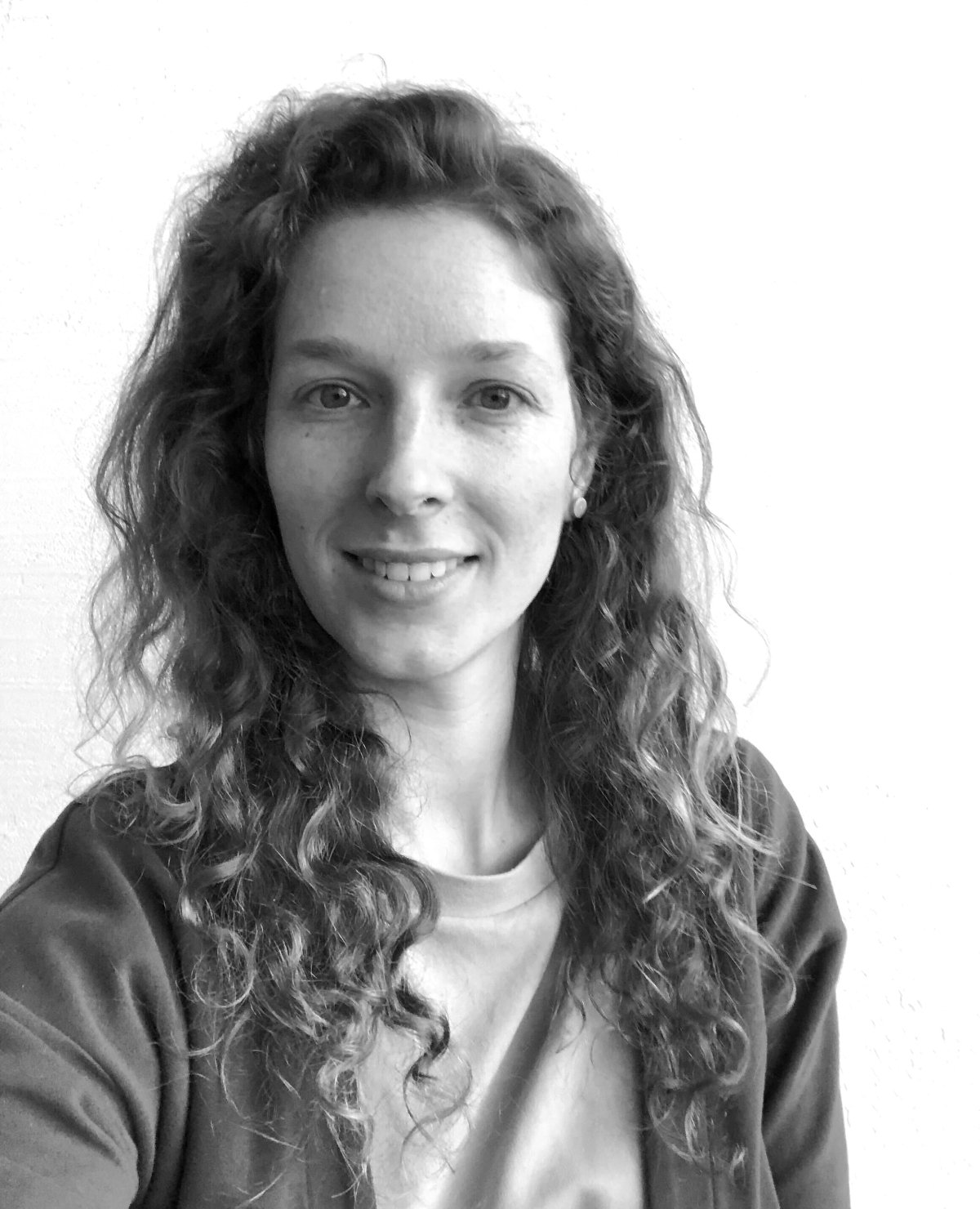
Public relations expert, strategist

Manager

Biologist, sustainability specialist, forest team manager
Donate your forest
If you have a forest and don't know if it will fall into good hands, you can donate it to the Ancient Woods Foundation, which will ensure the preservation of it and the ecosystems that live within.
Contribute financially
All of the raised funds are used for the purchase of private, old forest plots, protecting them from felling and human activities. Everyone, regardless of their contribution efforts, will be able to visit and observe the spectacular life of ancient woods.
Contribute via your preferred method: e-banking, credit card or direct bank transfer.
DonateContribute with one-time or recurring donations. For recurring donations choose “Make this a monthly donation”.
Support the foundationWhen filling in the personal income tax application form, enter the code of VšĮ „Sengirės fondas“: 305433631
A memo on how to fill in a formSubmit or correct declarations until May 2nd.
Share information
If you know that an old, biologically valuable forest is for sale - be sure to share the information with us here:
Forest proposal formIf you want to contribute with your professional knowledge, shoot us a message here:
komanda@sengiresfondas.ltShare your knowledge, stories and experiences related to the old Lithuanian forests with relatives, acquaintances and friends.
Sincere thank you to everyone who contributed to the creation and preservation of the ancient Lithuanian forests.
entomologist
mycologist
ornithologist
mycologist
ornithologist
ecologist
ornithologist
geobotanist
malacologist
climatologist
geographer
geographer, environmental scientist
biologist
botanist
environmentalist
geographer
ornithologist
naturalist, photographer
botanist
zoologist
biologist
Photographer
Photographer
Photographer
Photographer
Photographer
Brand Identity Designer
Brand Identity Strategist
Education Content Creator
Web Developer
Designer, Social Media
Educational Content Coordinator
Forest Information Specialist
Social Media Specialist
GIS Specialist
Educational Events Coordinator
Forest Acquisition Specialist
Developer
Ranger
Designer
Forest Protection Coordinator
Data Analyst
Forest Team Lead
photographer
project coordinator
video content creator
Developer
Fundraising and Event Coordinator
Educational Programme Coordinator
Ambassador Coordinator
Biodiversity Credits Expert
Team Coordinator
Forest Acquisition Coordinator
Donations Coordinator, Developer
Content Creator, Coordinator
Ranger
Animator
Forest Information Specialist
Data Analyst
Educational Content Specialist
Information Security Expert
Content Creator
Forest Research Coordinator
Photographer
Shinrin-yoku Guide
Photo editor
Coordinator
Content coordinator
Communication coordinator
Coordinator
Forest information specialist
Content creator
Coordinator
Video creator
Coordinator
Project coordinator
Newsletter coordinator
Content creator
Ranger
Ranger
Ranger
Ranger
Ranger
Ranger
Ranger
Ranger
Ranger
Ranger
Ranger
Ranger
Rangers
Fundraising and partnerships
Content coordinator
Writer
Artist
Activist
Performer
Director
Mythologist
Historian
Director
Performer
Shinrin-yoku Guide
Photographer, Creator
Writer
Educator
Swimmer
Director, Performer
Photographer, Journalist
violinist
cultural anthropologist
Environmentalist
Photographer, Entrepreneur
Musician